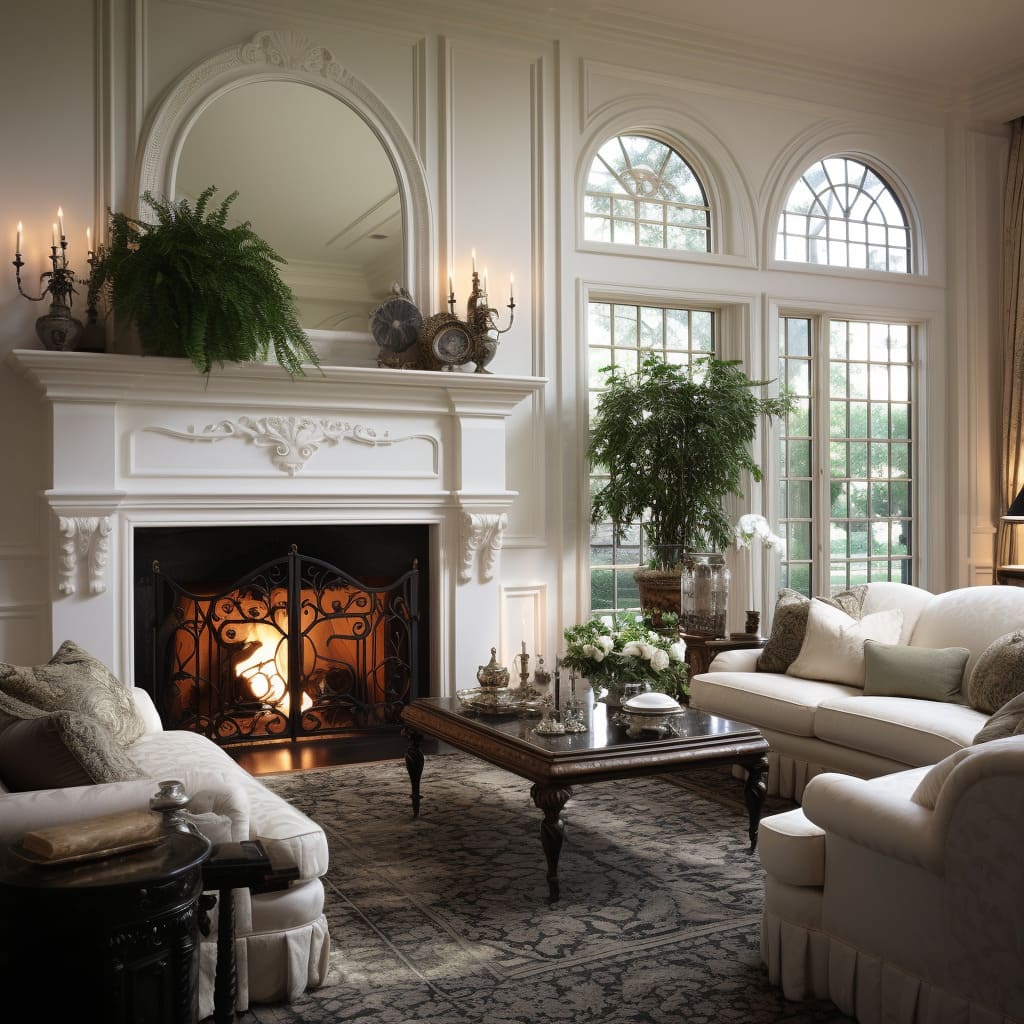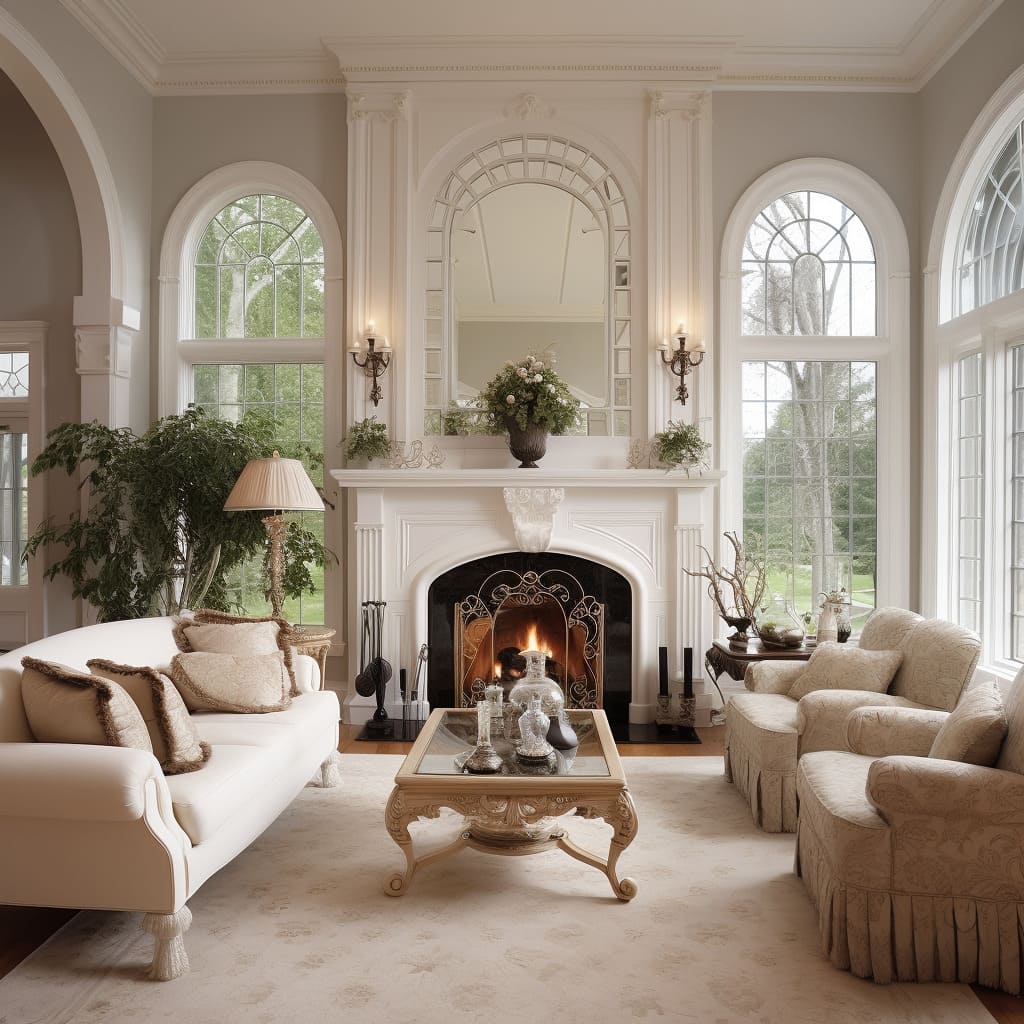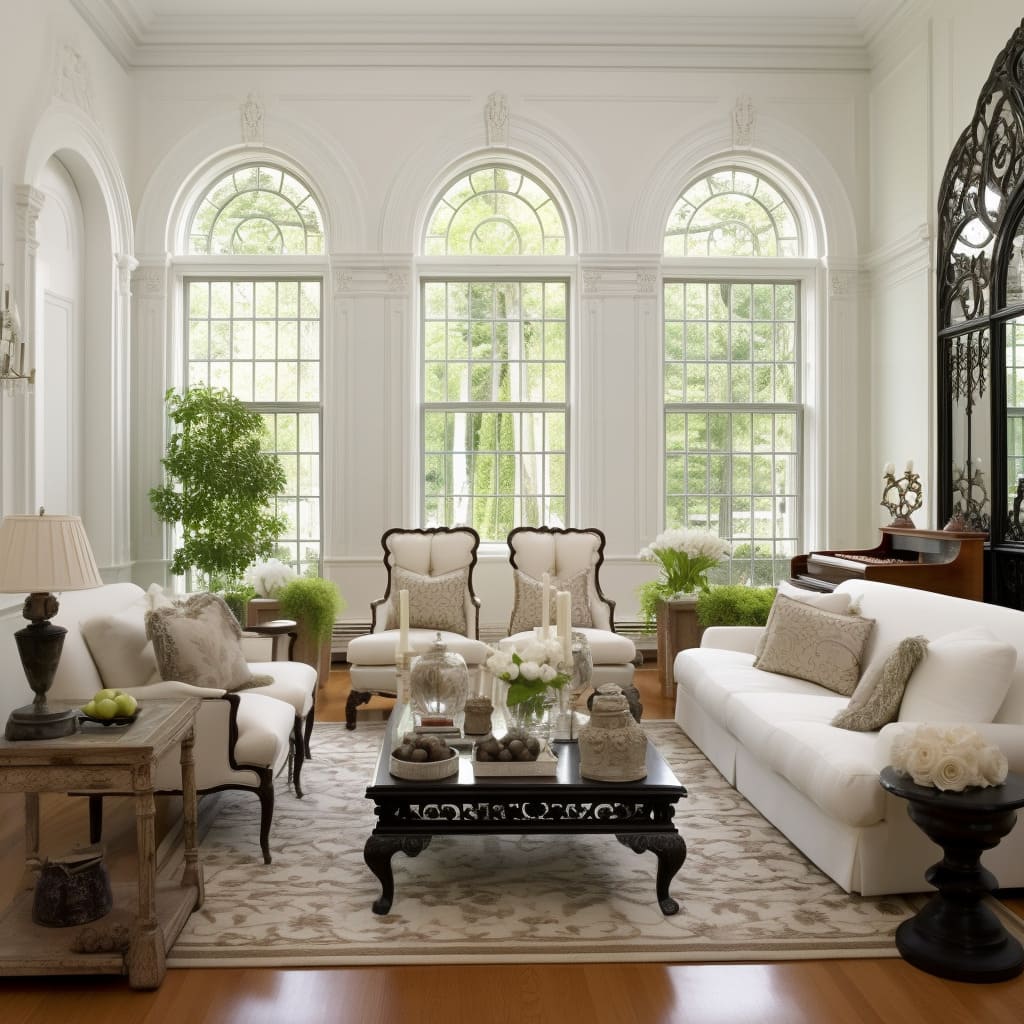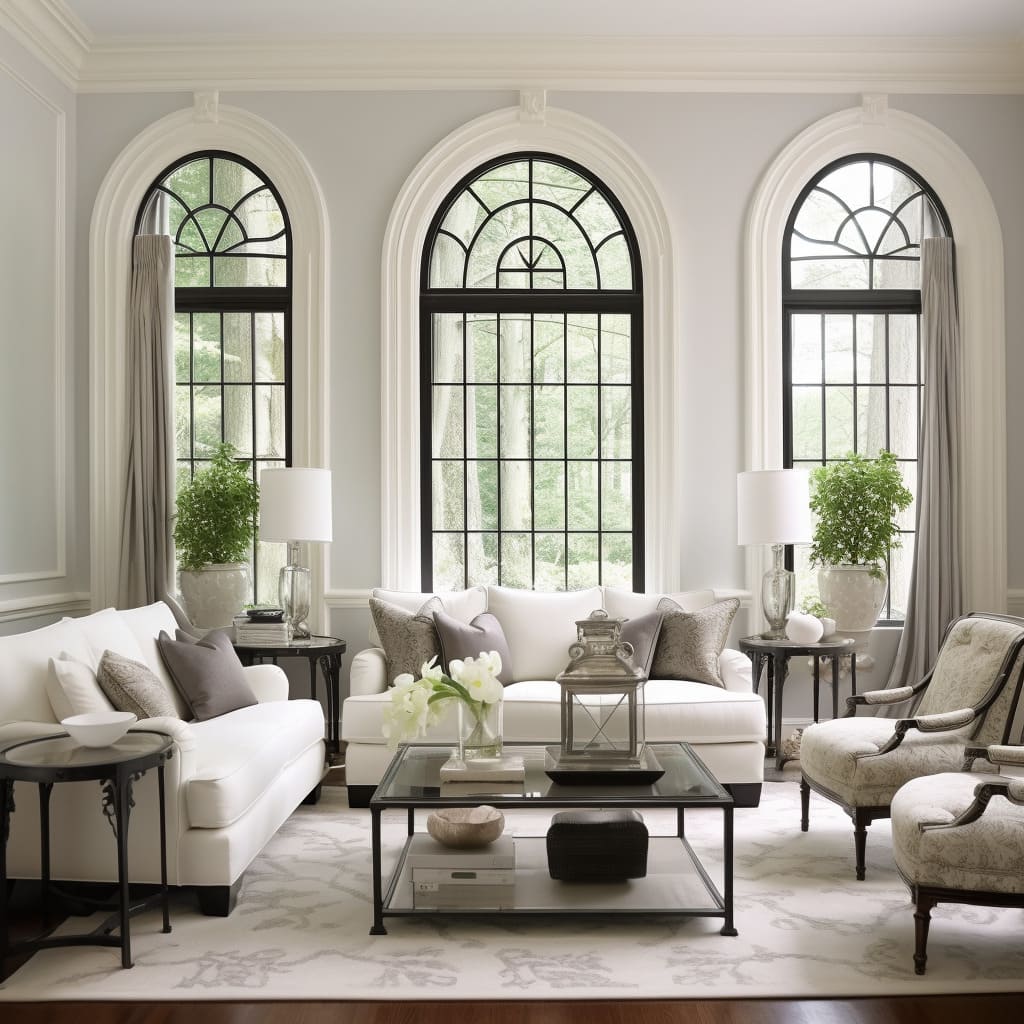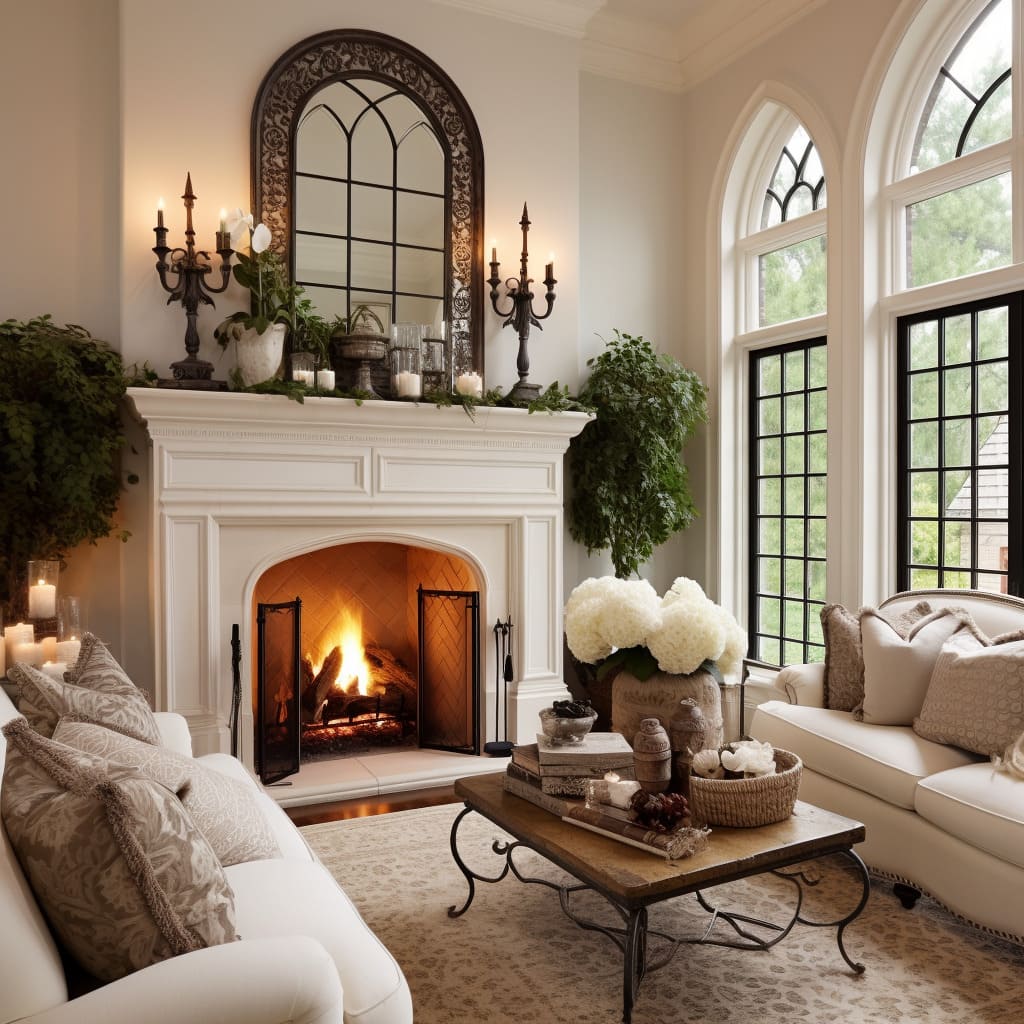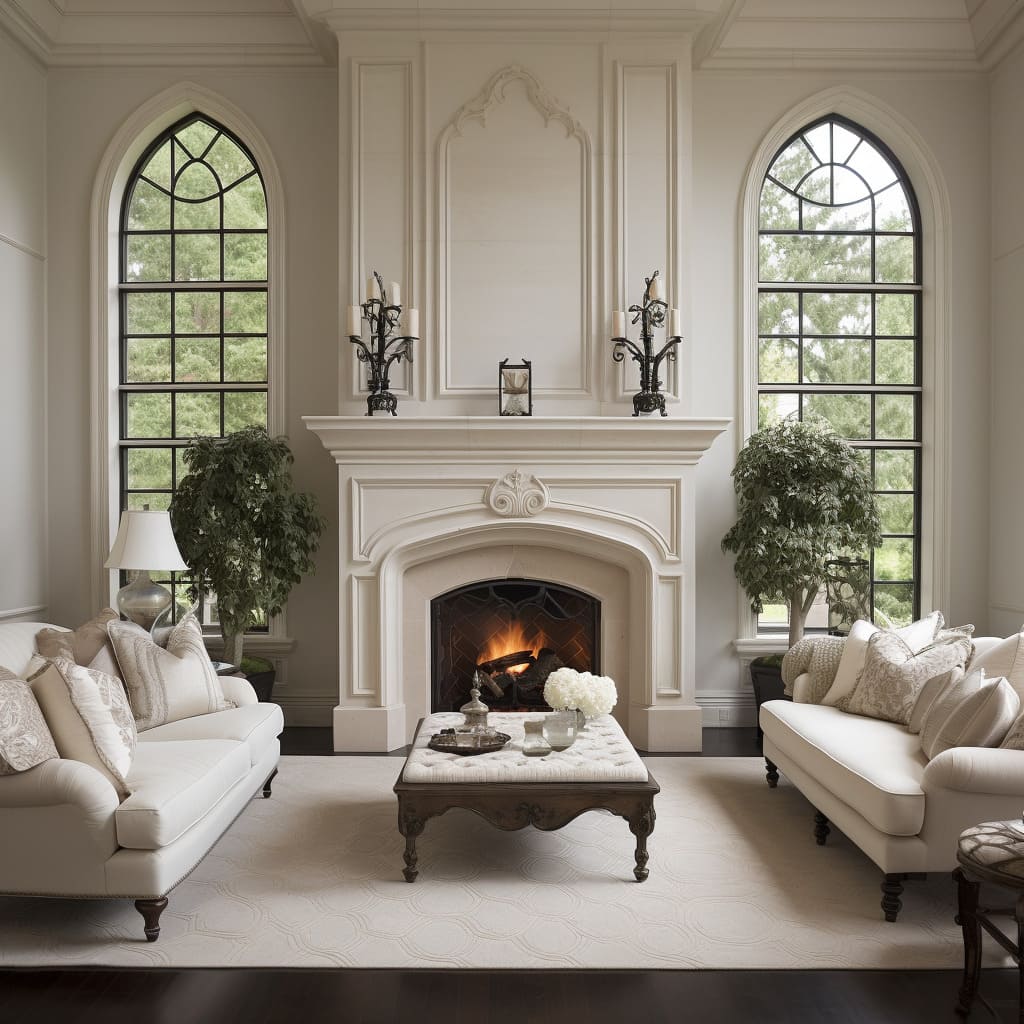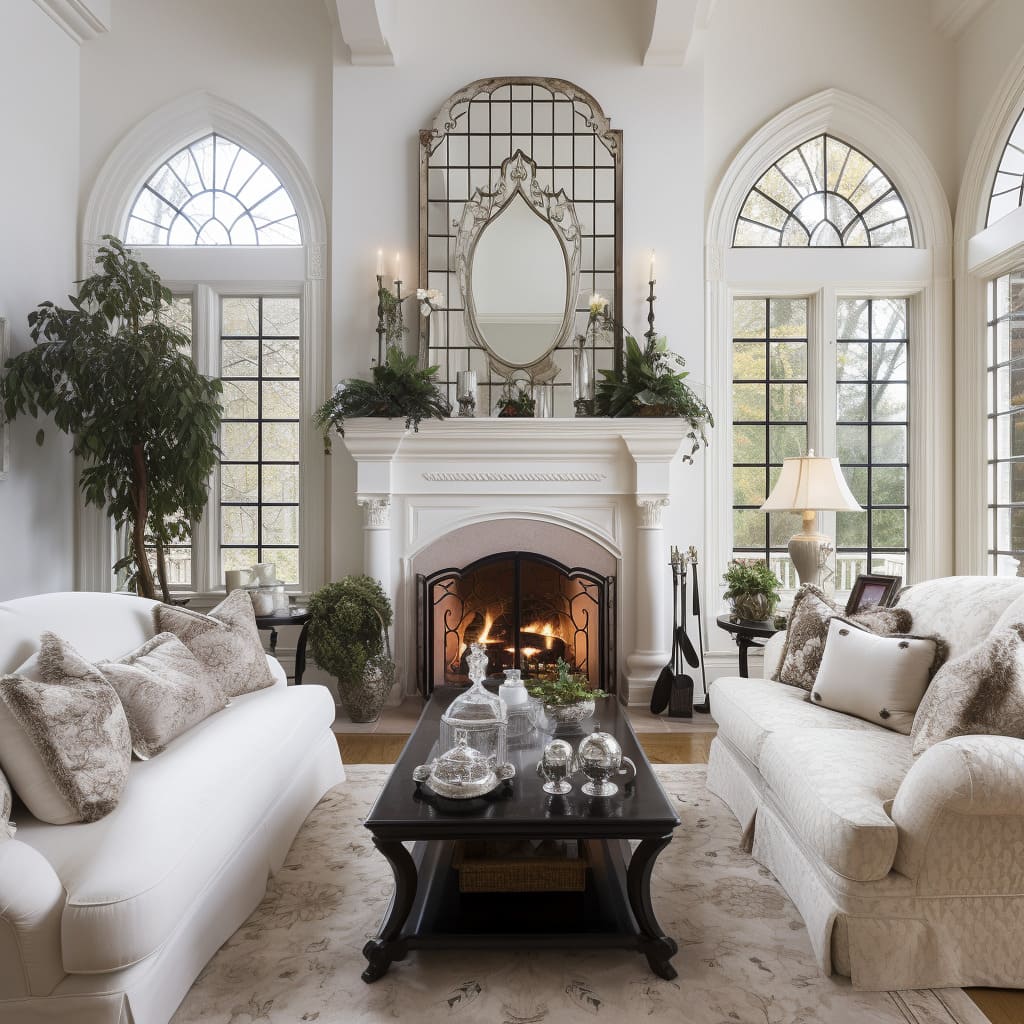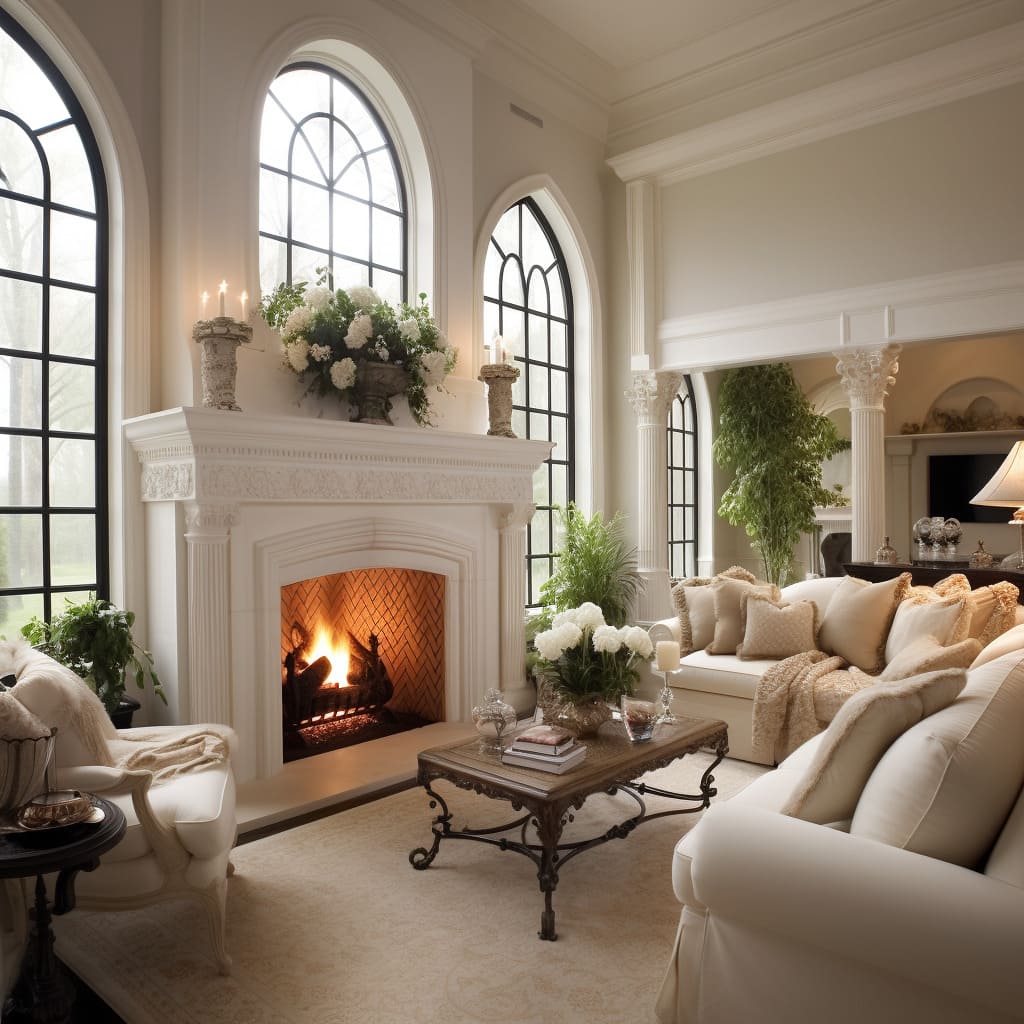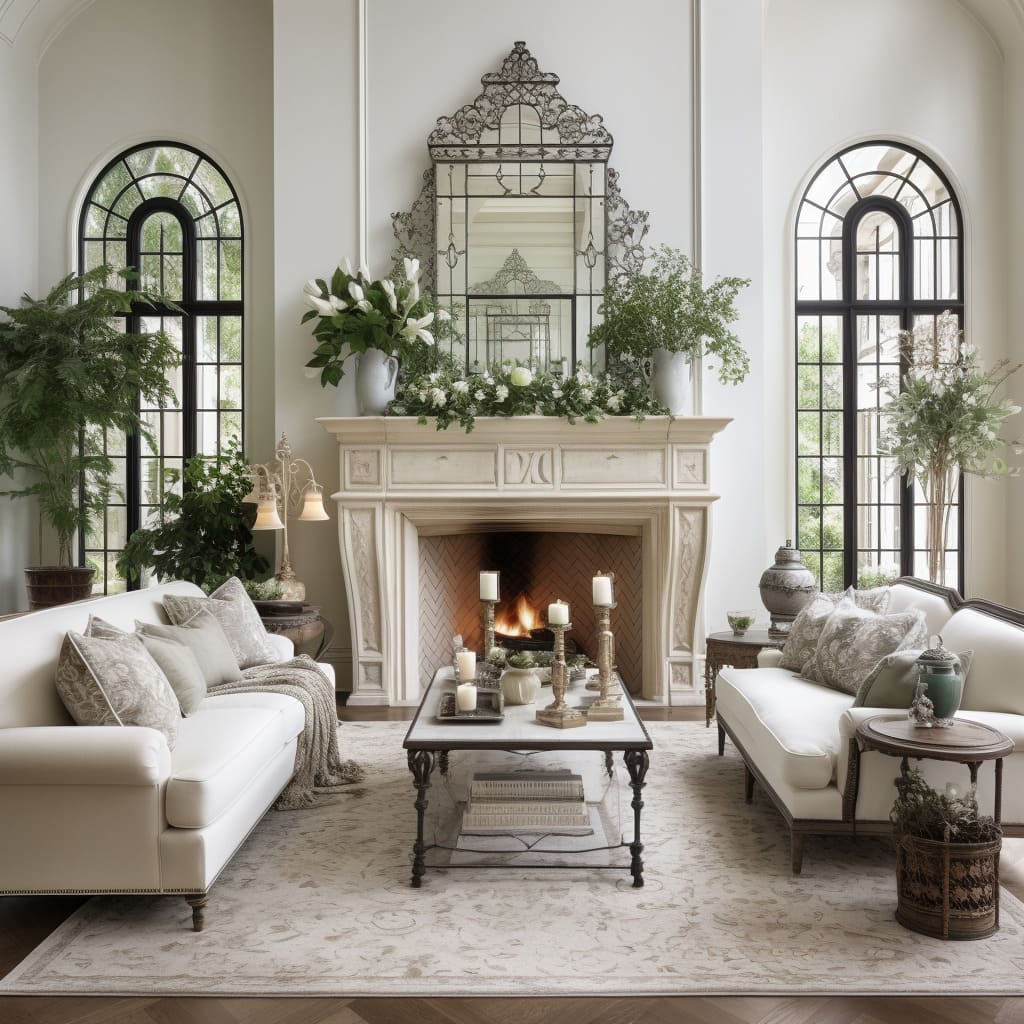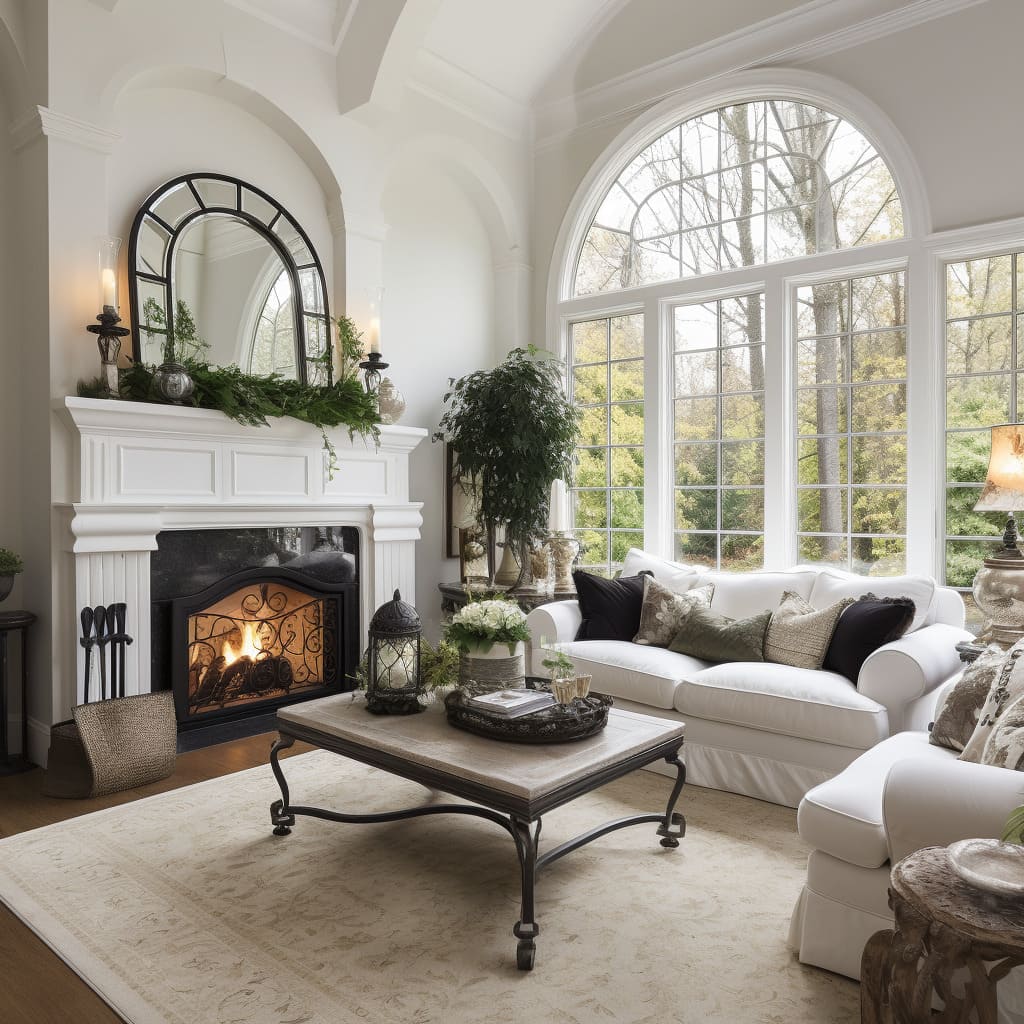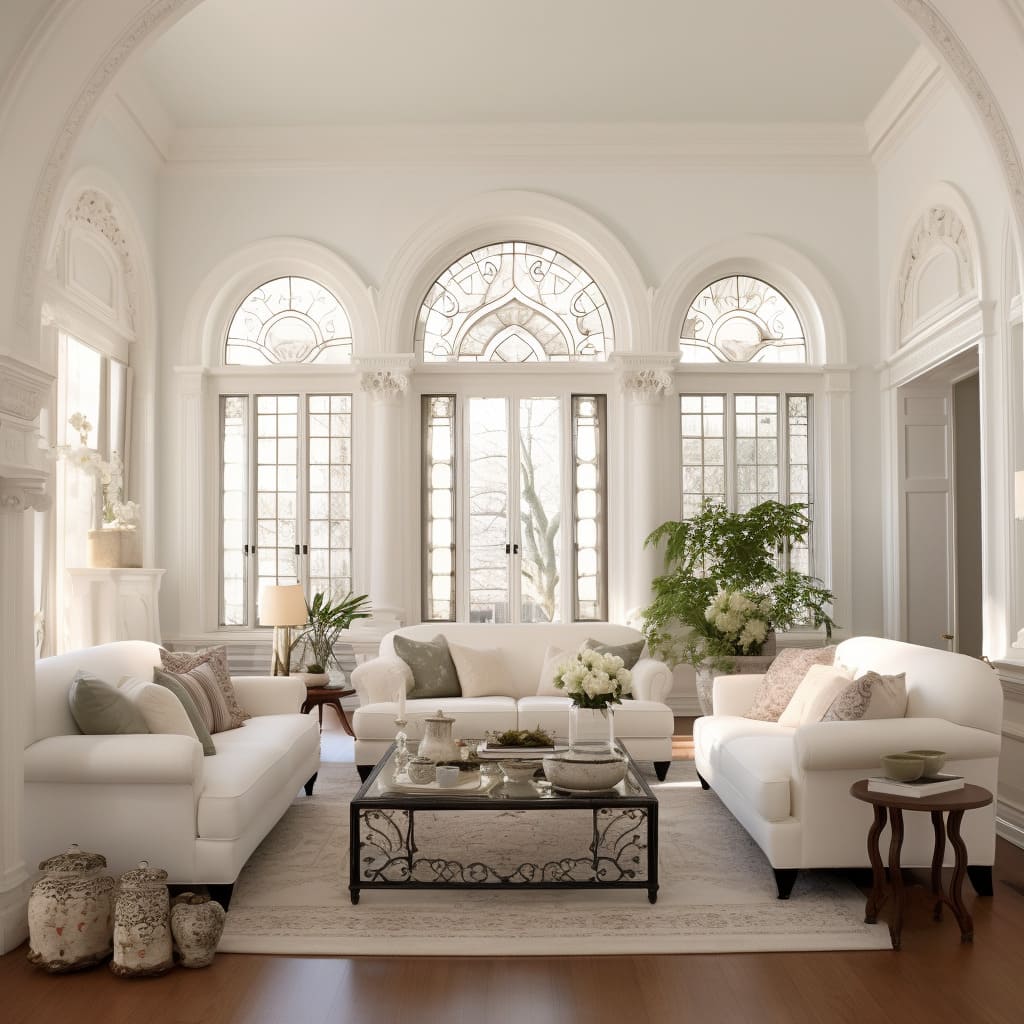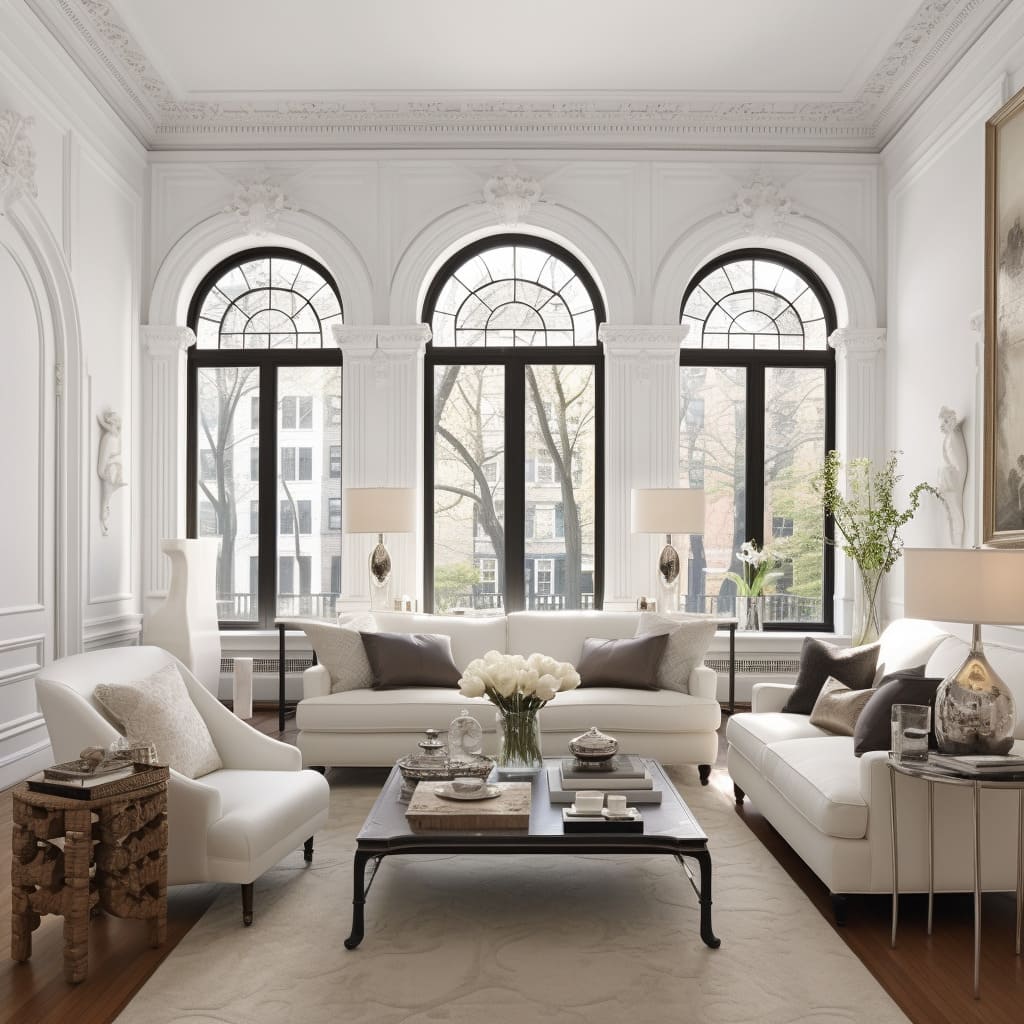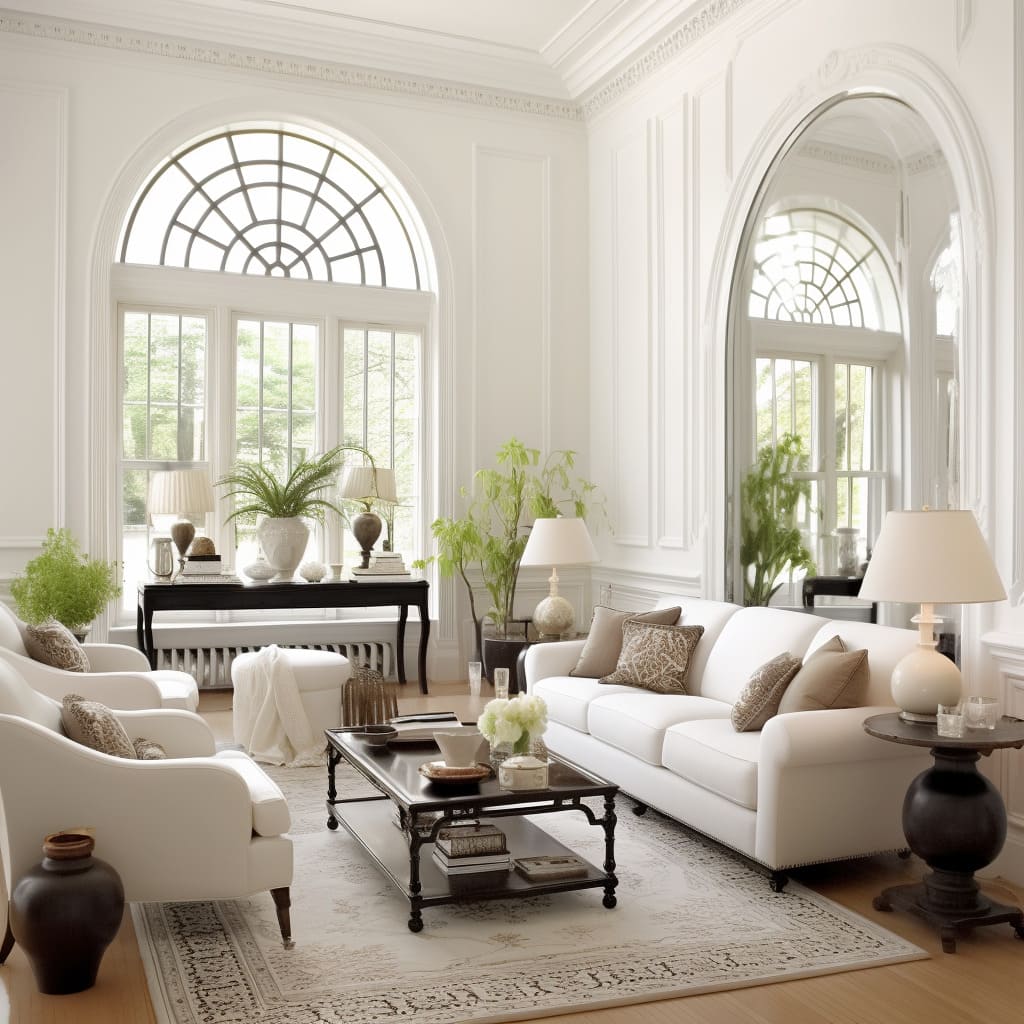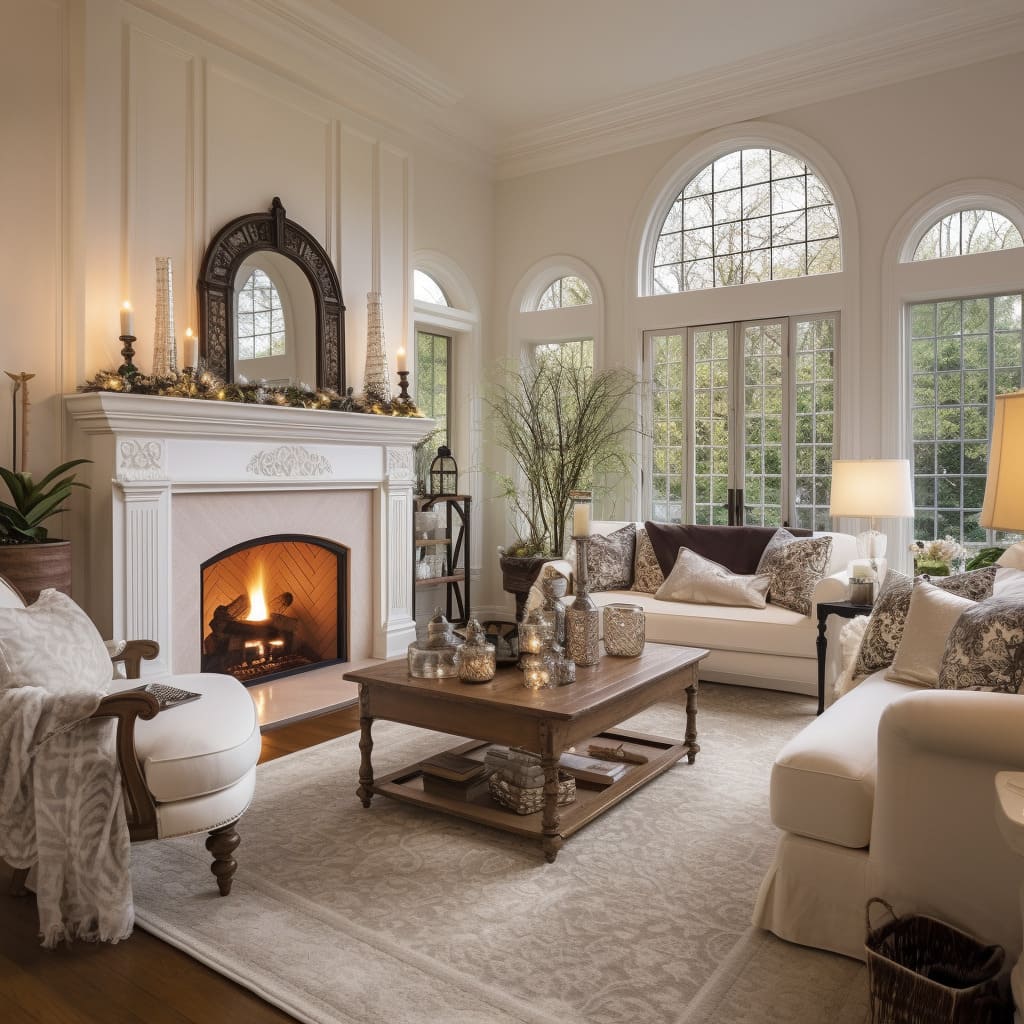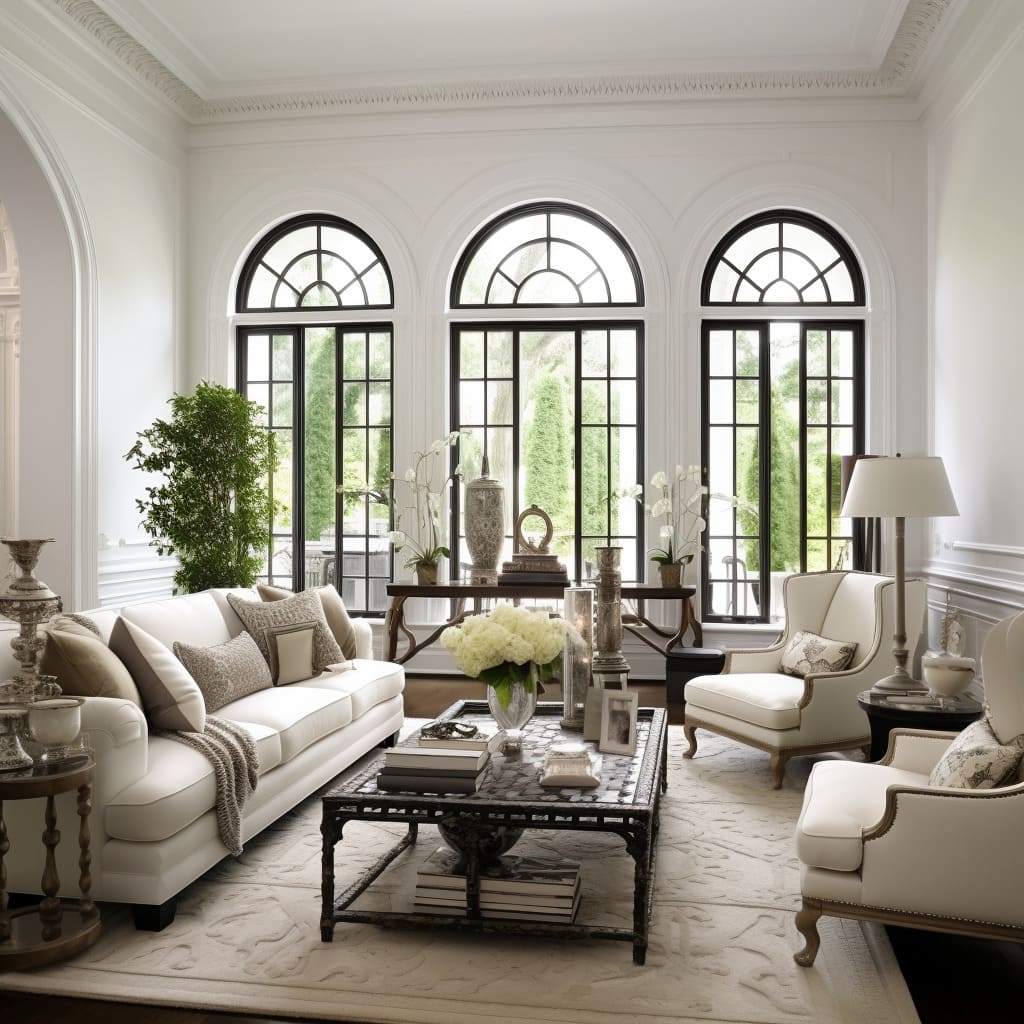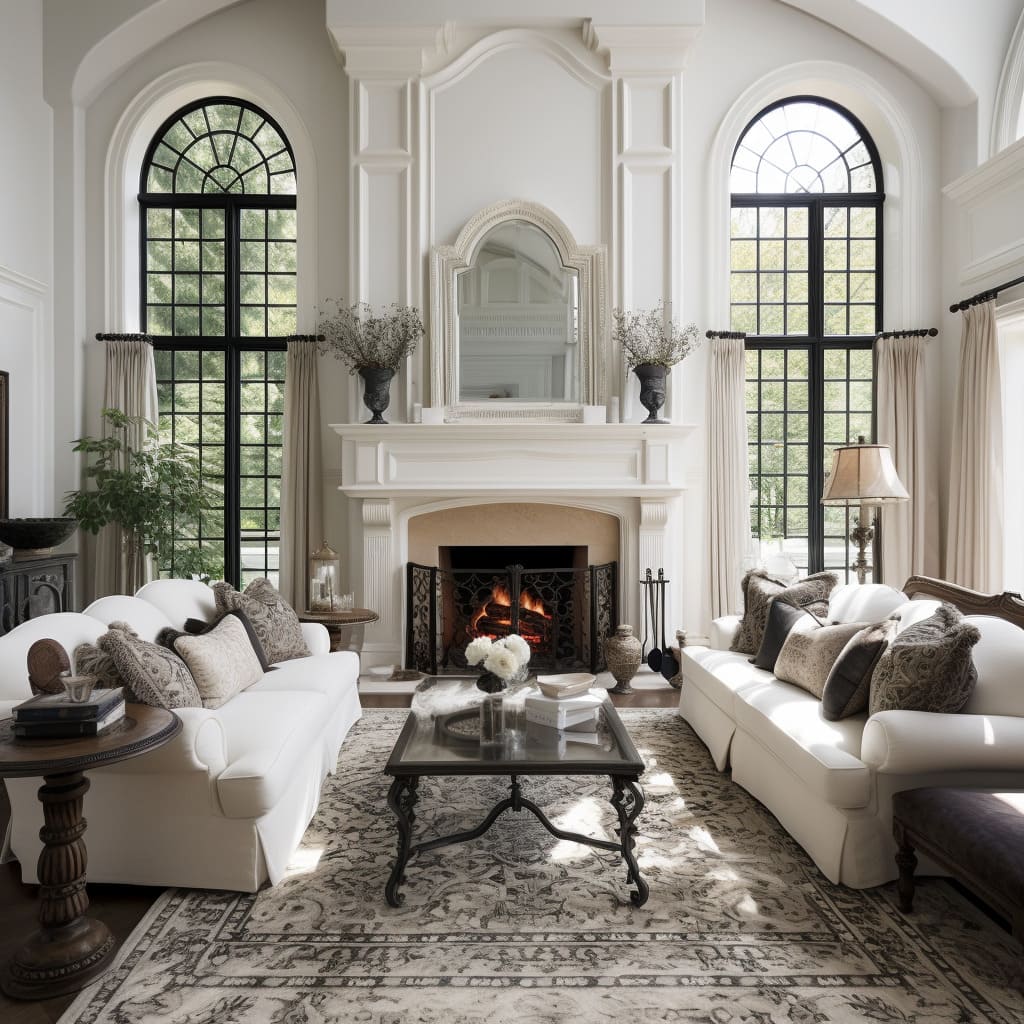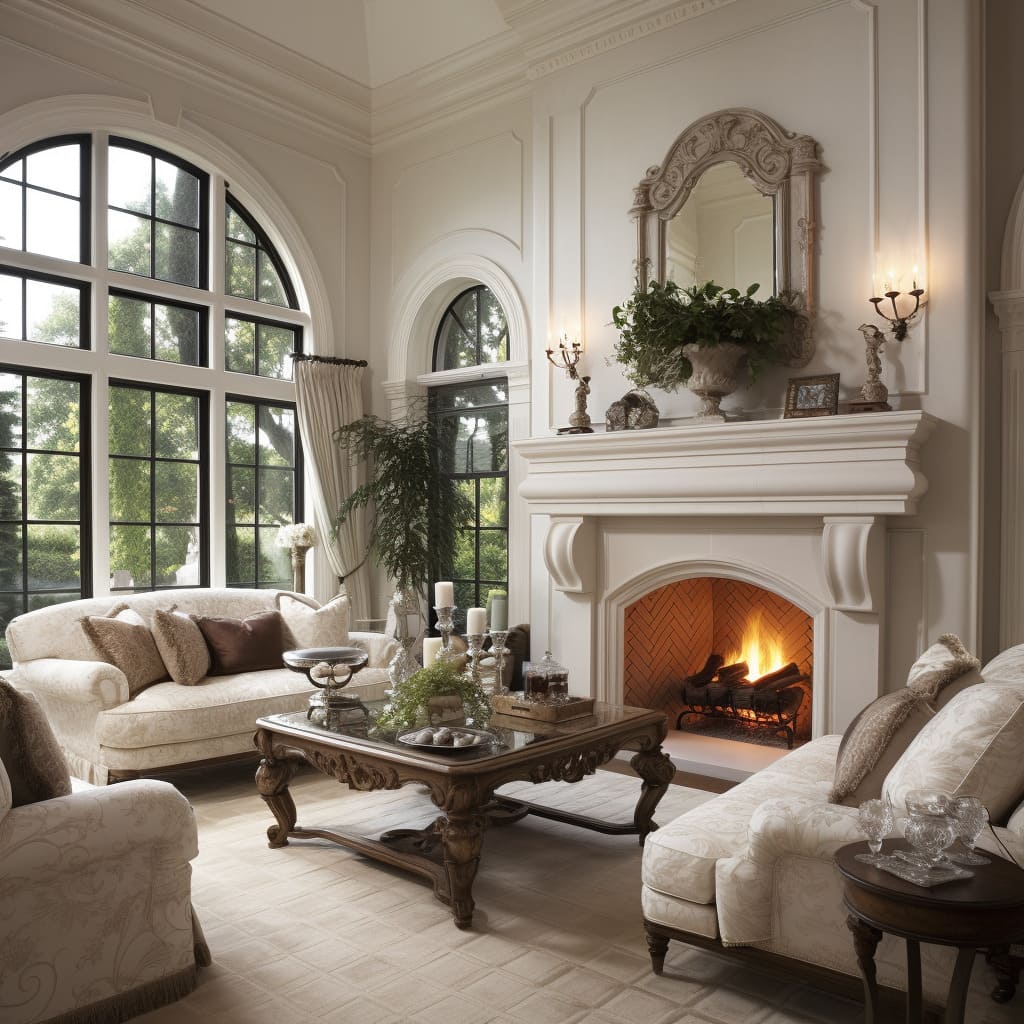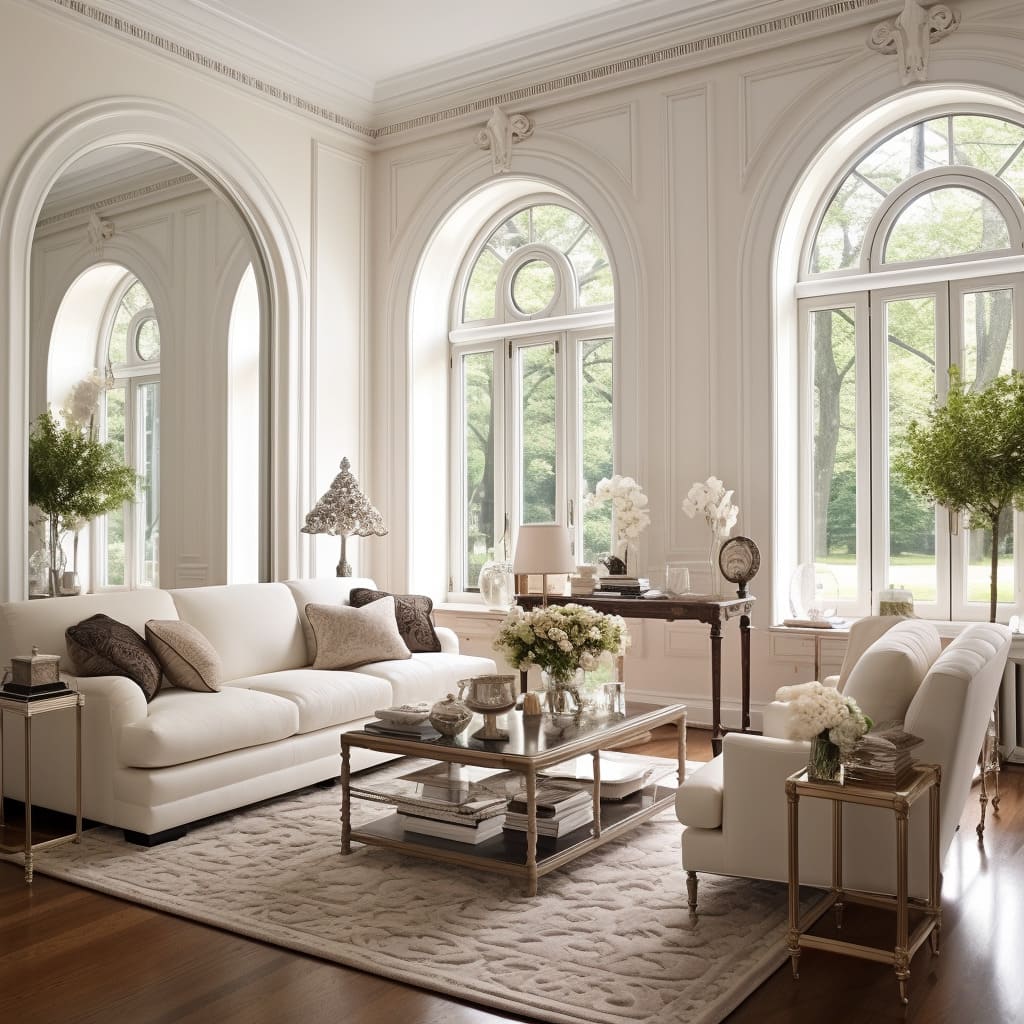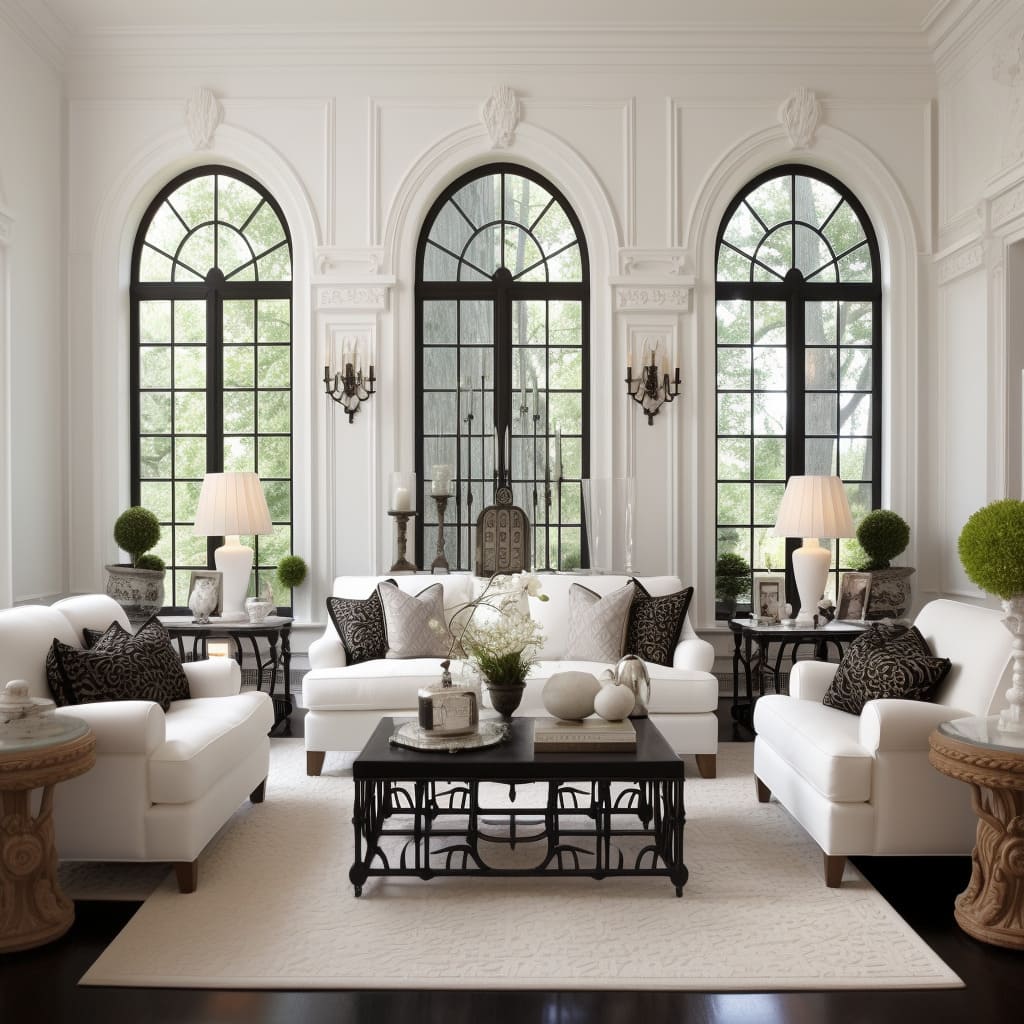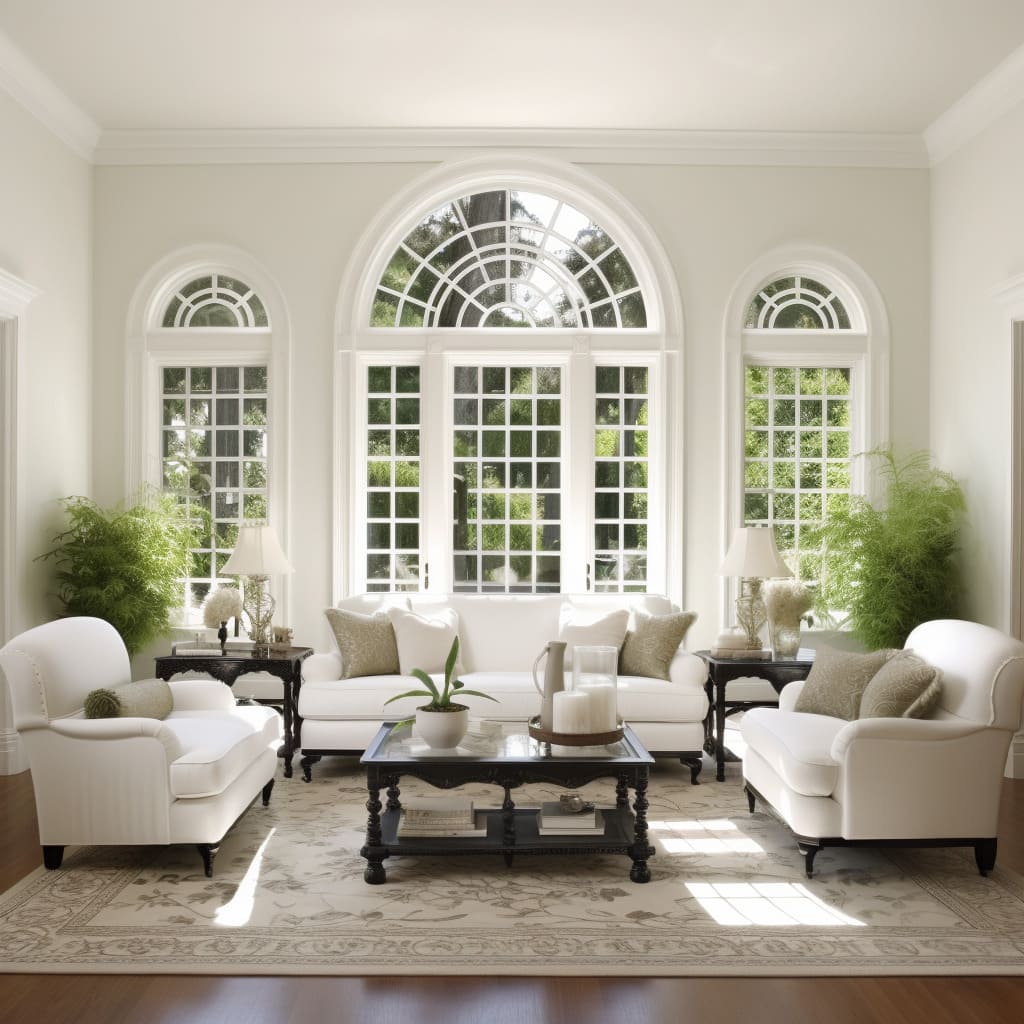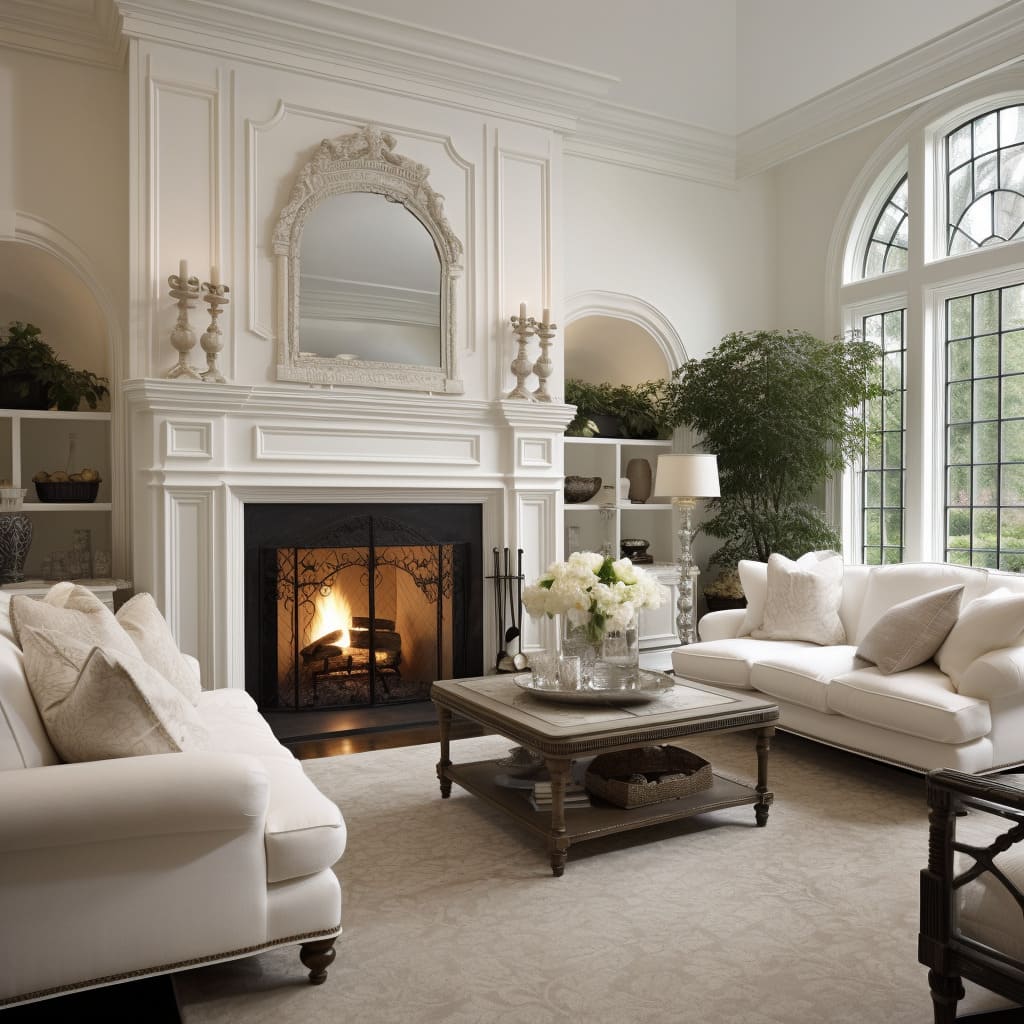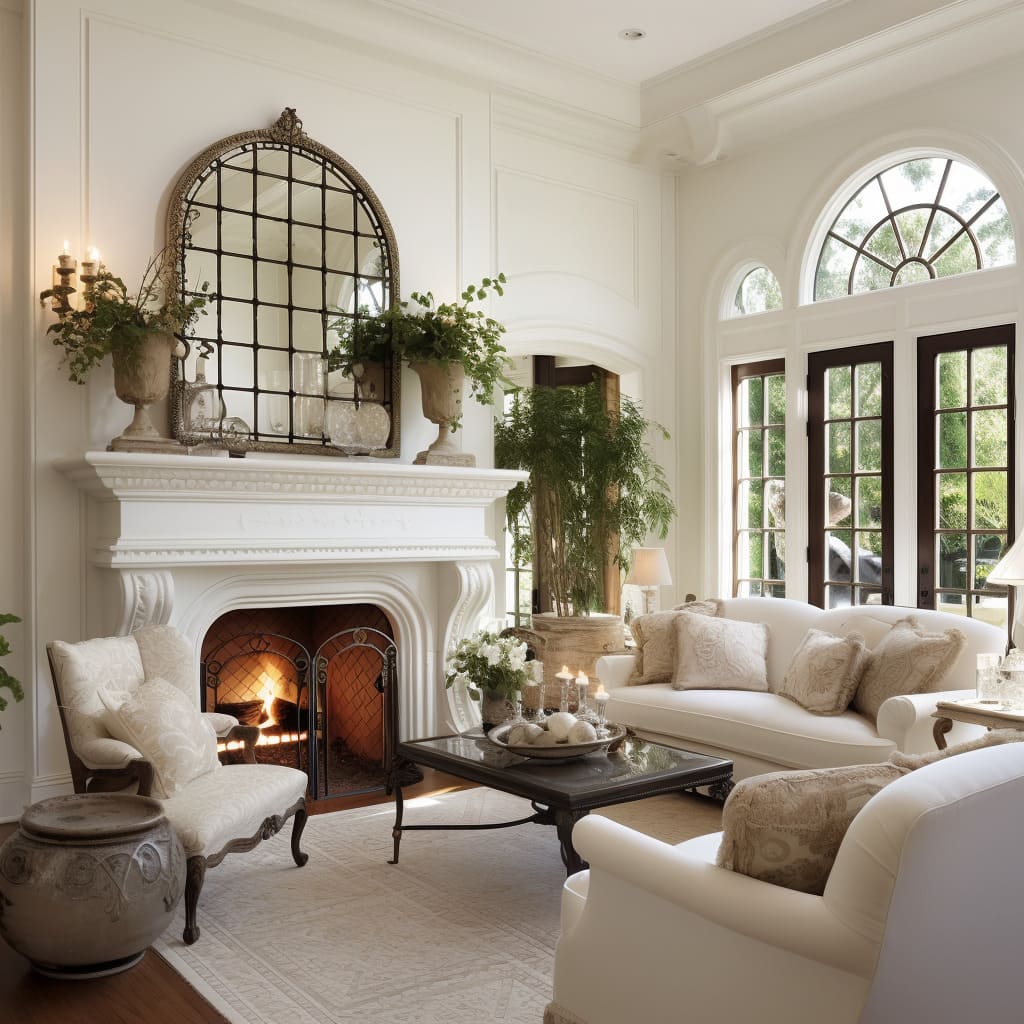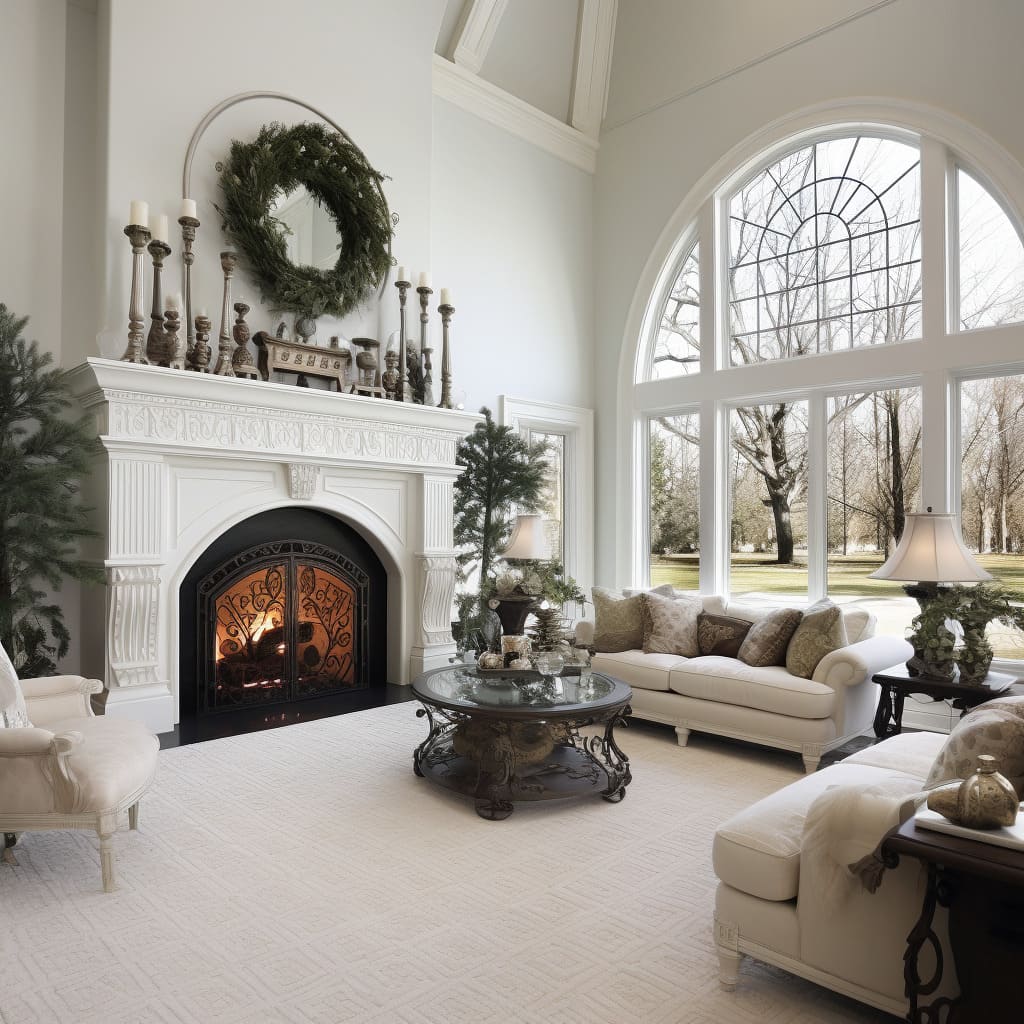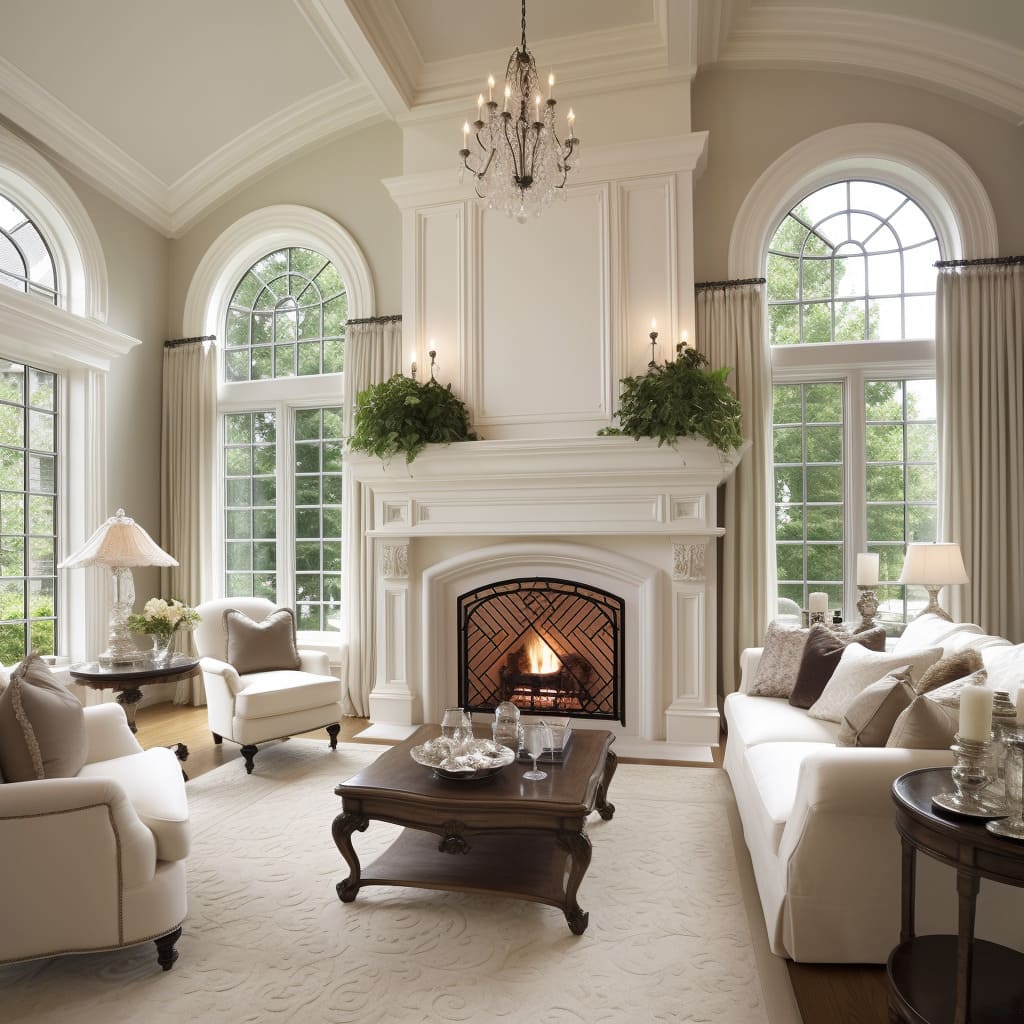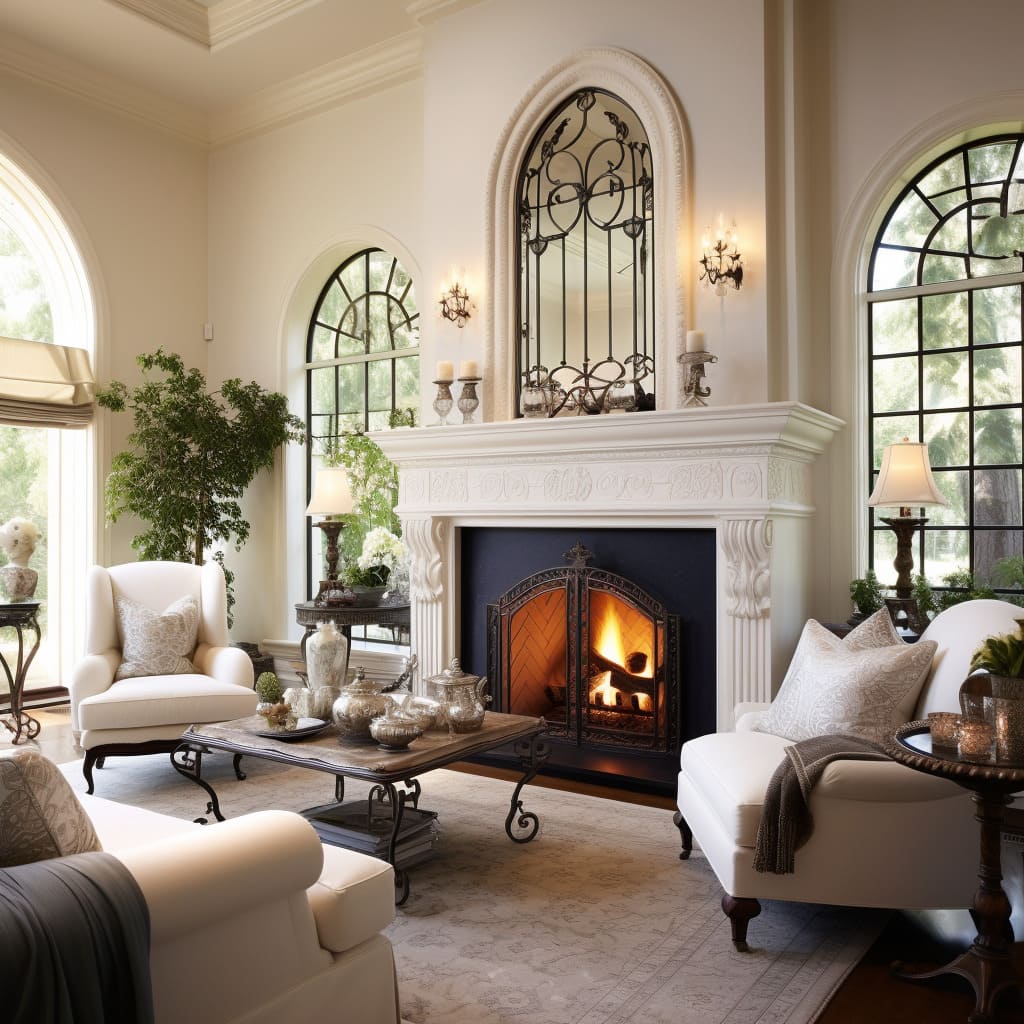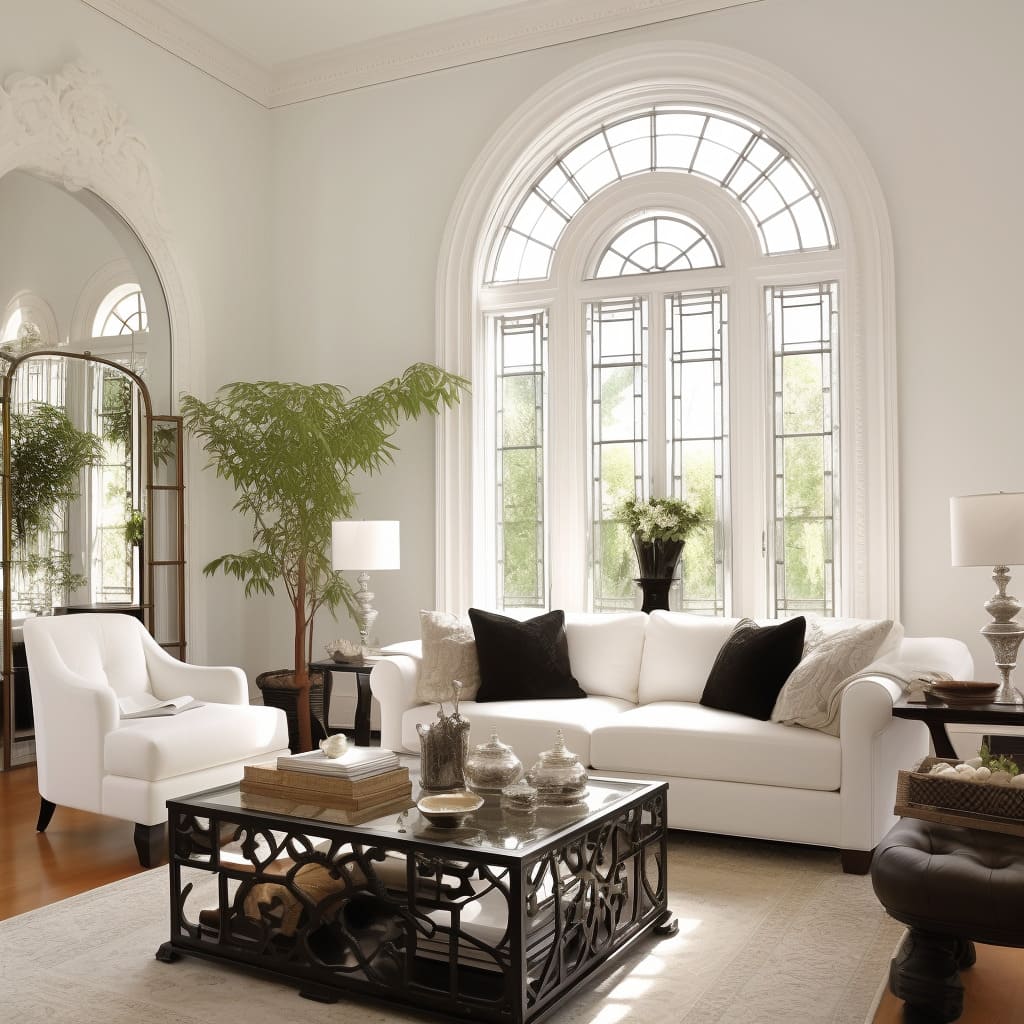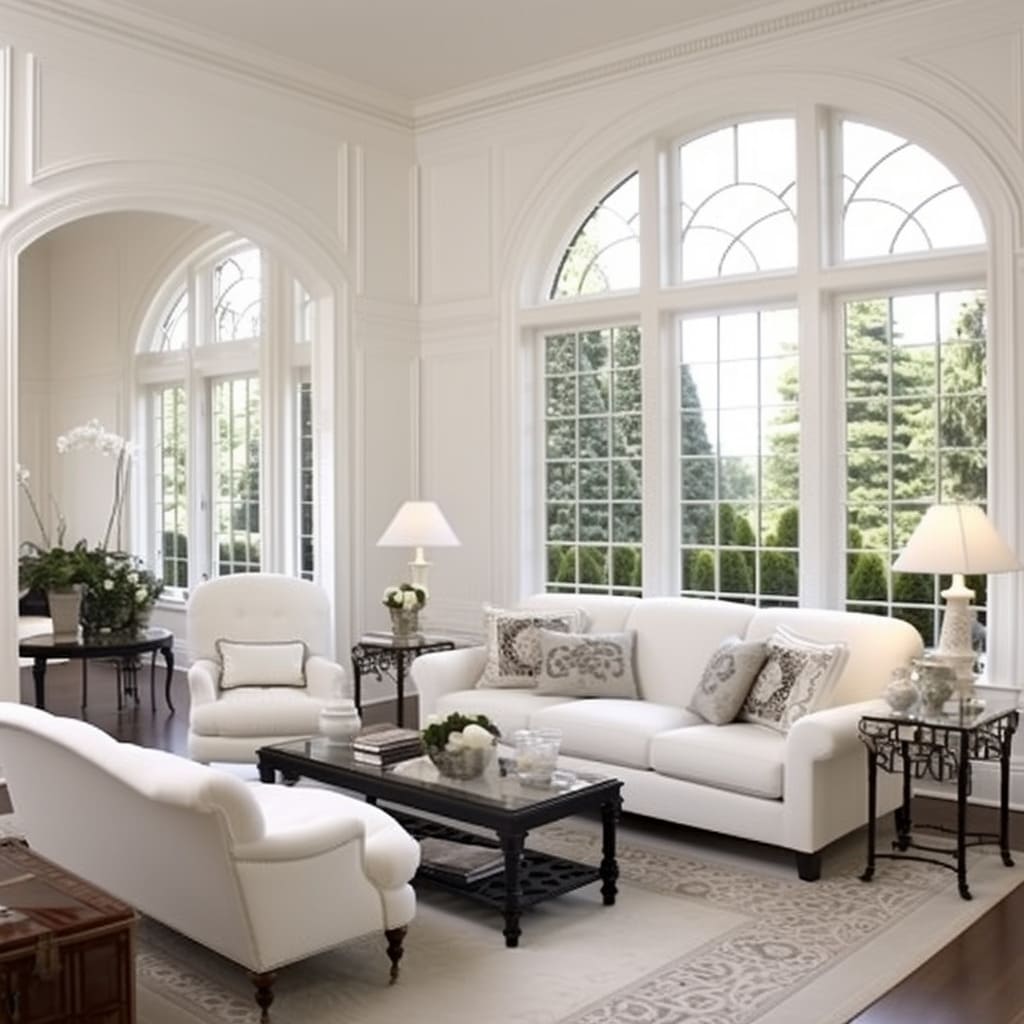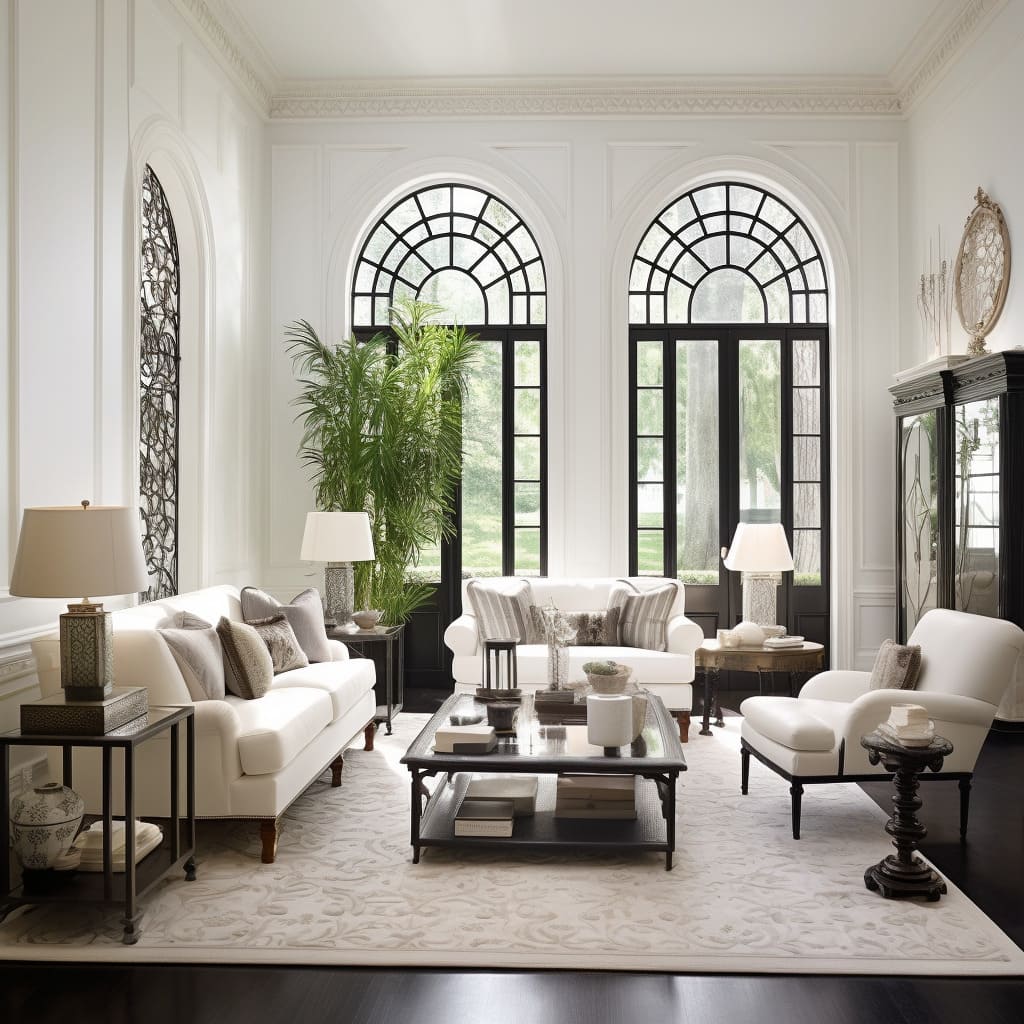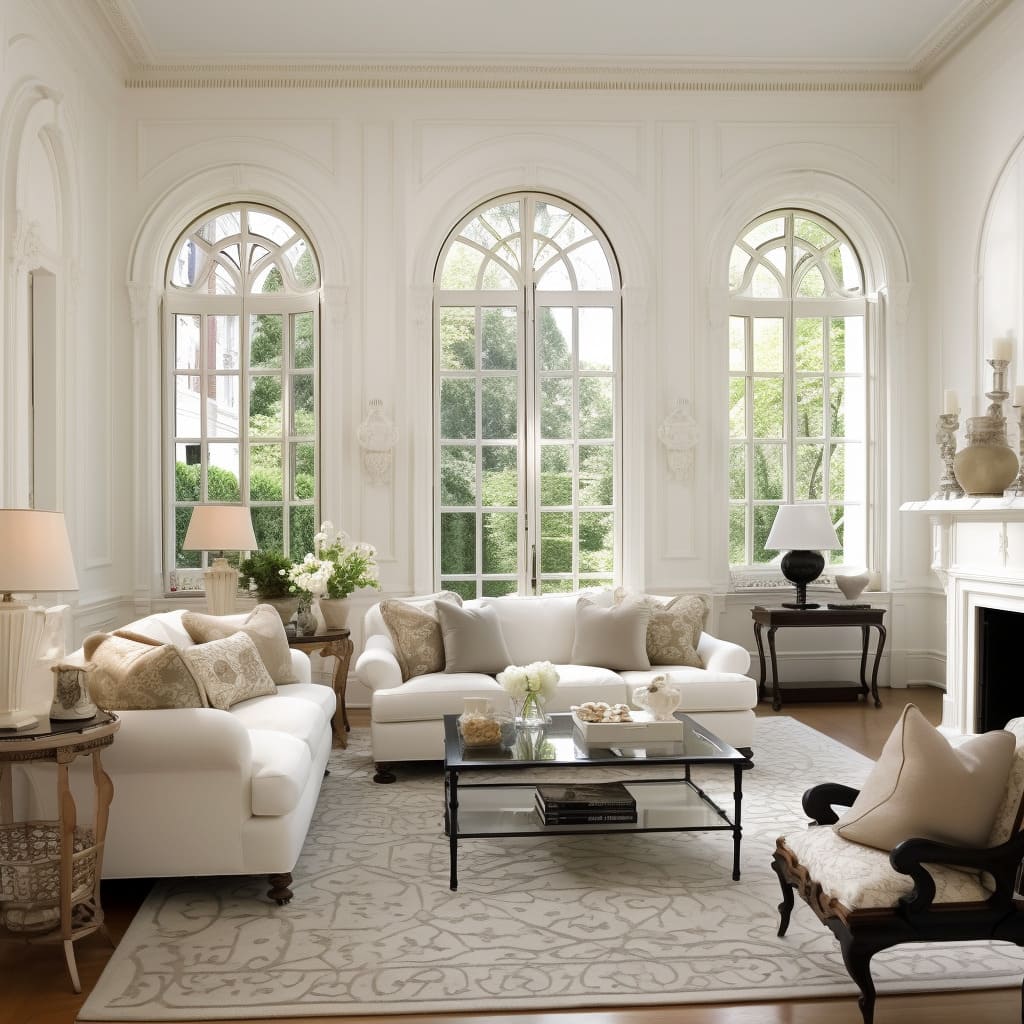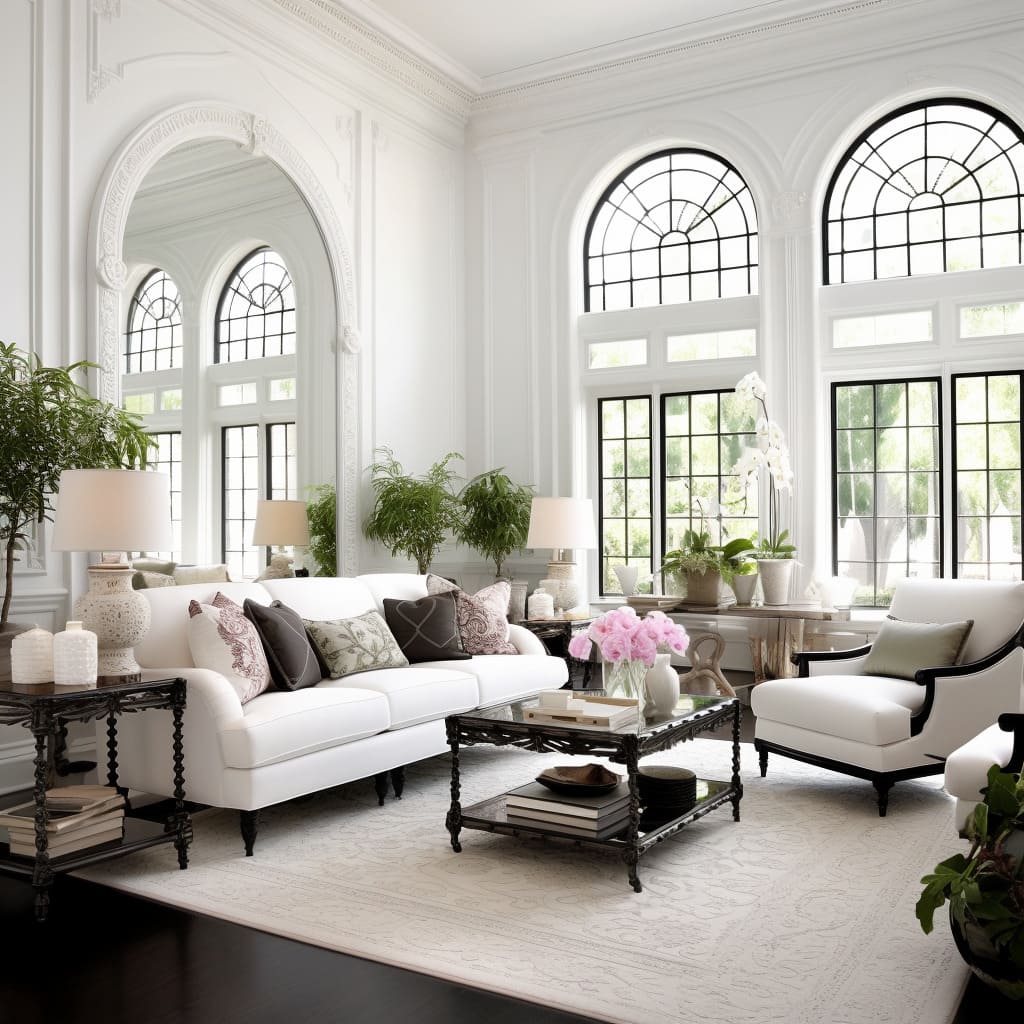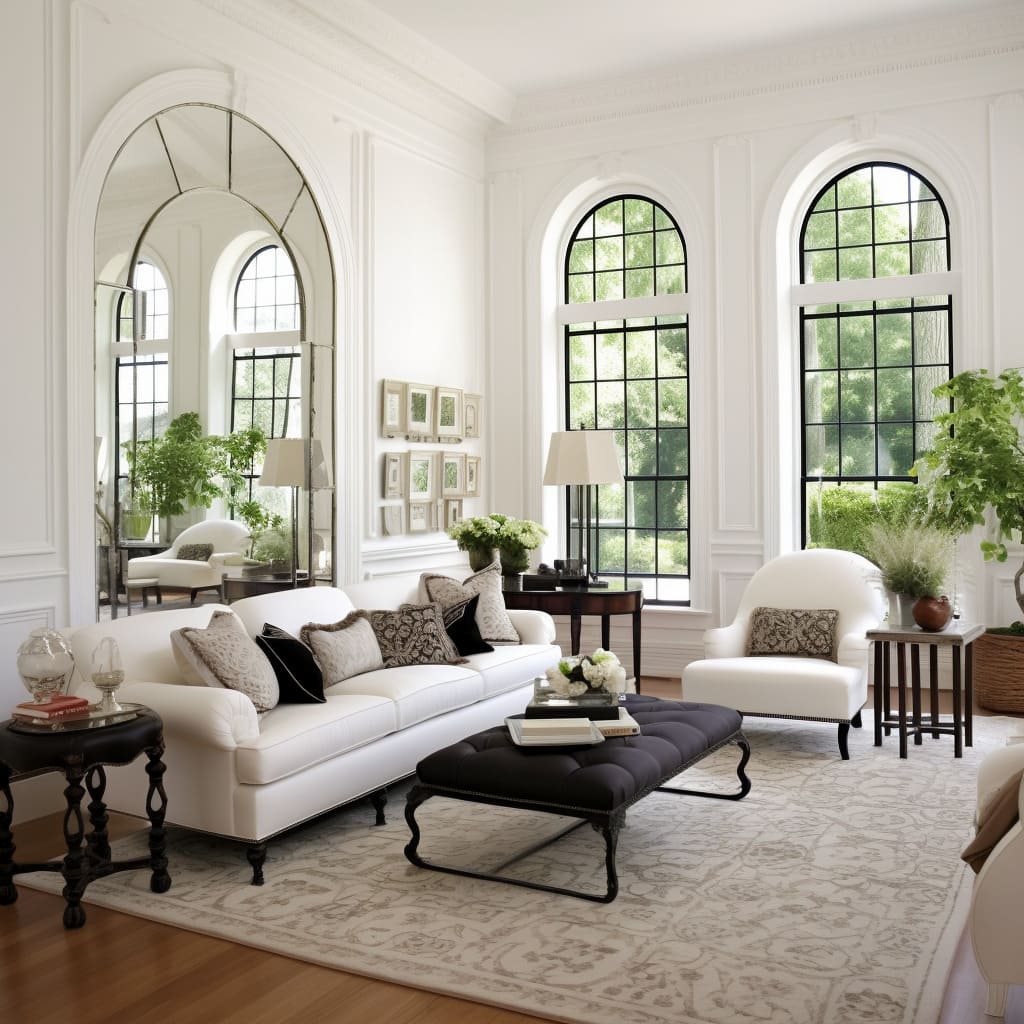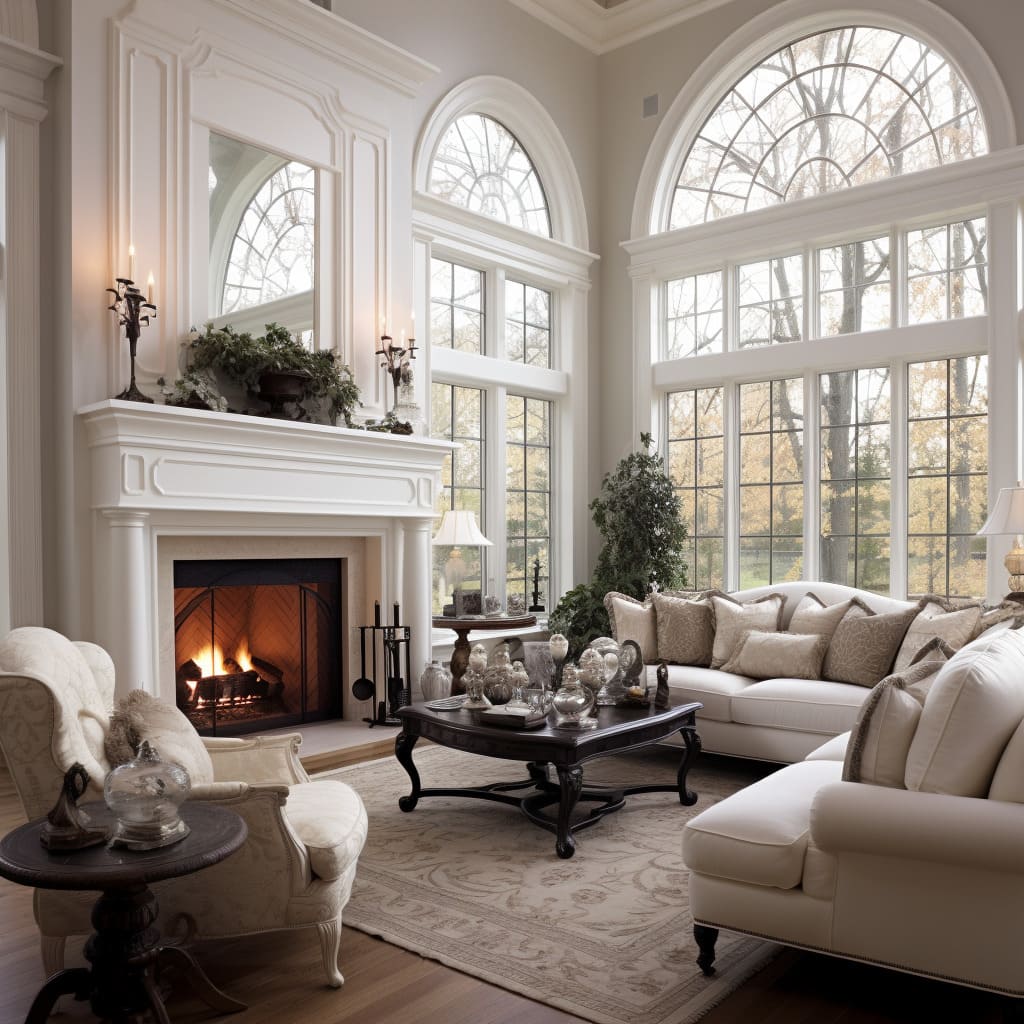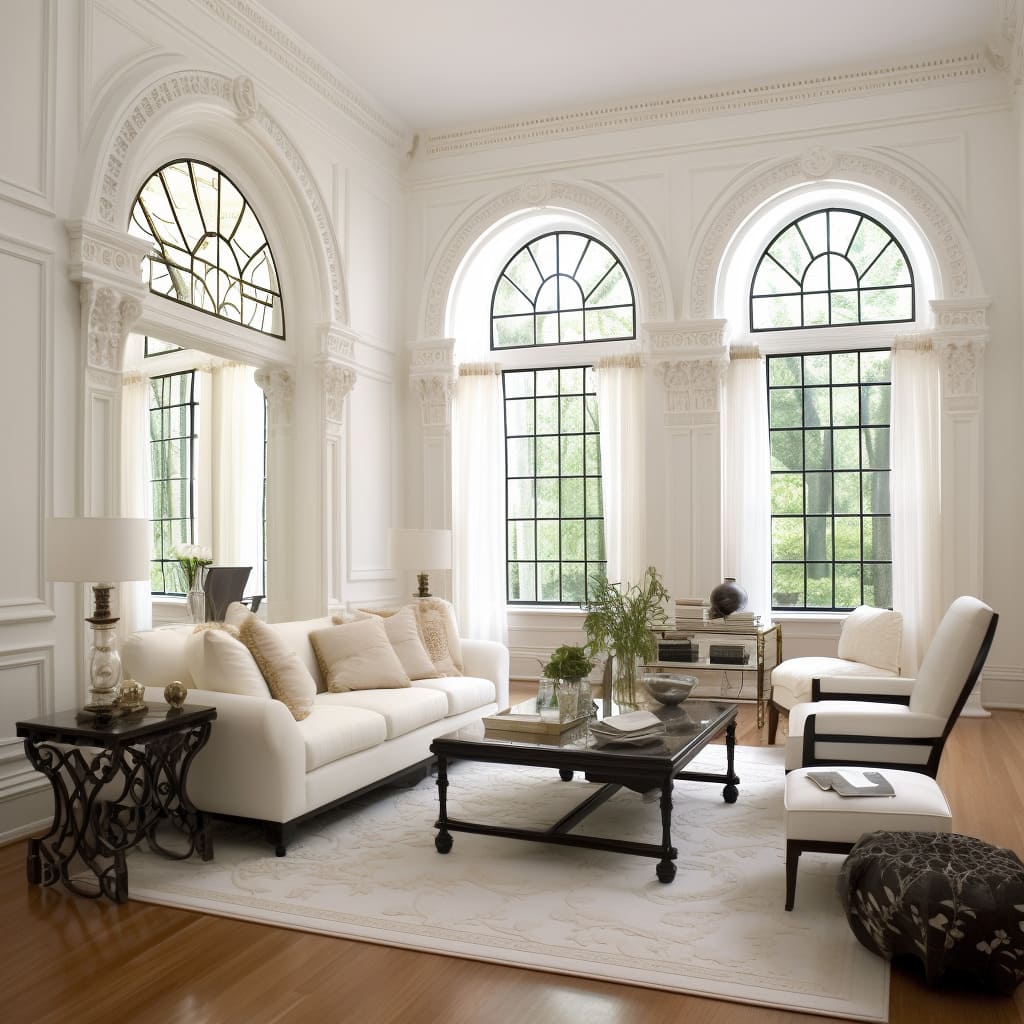Classic and elegant interior design stands as a testament to timeless beauty and refined taste. This article delves into the quintessential elements that make up this enduring style, revealing how each aspect contributes to creating spaces of sophistication and grace.
At the heart of American Transitional design is its emphasis on a balanced use of space, a neutral and sophisticated color palette, and a careful selection of materials and textures. This style stands out for its spacious layouts, enhanced by architectural features like high coffered ceilings and thoughtful lighting.
The color schemes are predominantly neutral, providing a serene backdrop that highlights the richness of materials used, such as plush upholstery, reflective metals, and natural stone.
We explore the harmonious blend of textures and materials that add depth to neutral color schemes, and how careful consideration of color and contrast brings life and dimension to these elegant spaces. The article further highlights how elements like large windows, carefully chosen furnishings, and thoughtful decorative accents come together to embody the essence of classic elegance in interior design.
Classic Elegance
The essence of this interior design lies in its classic and elegant approach. Traditional furniture and a neutral color scheme are the keystones of this style.
Large windows are a signature feature, inviting ample natural light that enhances the room’s openness. White walls and exquisite crown molding add a touch of sophistication.
In terms of furniture, a plush white sofa, complemented by textured pillows, offers a cozy seating arrangement. Elegant armchairs with wood details and cream fabric create a balanced and harmonious setting.
A central dark wood coffee table with intricate carvings and a glass top contrasts beautifully with the room’s lighter tones, merging functionality with aesthetic charm.
Decorative elements like tall silver candlesticks, ornate urns, and vases filled with fresh white flowers enhance the luxurious feel. Classic table lamps with soft shades contribute to the room’s inviting warmth.
A large, subtly patterned area rug under the seating area, along with the soft texture of the hardwood floors, completes the look.
Textures and Materials
This interior design style is marked by a harmonious mix of textures and materials, creating depth and intrigue. In rooms with mostly neutral colors, these varied textures and finishes provide a rich tactile experience.
Furniture showcases a diversity of textiles. Sofas in soft, white leather offer luxury and smoothness.
Armchairs contrast with cream fabric, featuring subtle patterns or weaves.
Throw pillows add more texture, ranging from knit-style covers to velvety or embroidered fabrics. A chunky-weave throw blanket on the sofa enhances this layered textural effect.
The materials in the furnishings are equally varied, adding to the tactile richness. Wooden pieces like side tables and coffee tables bear a dark, polished finish, reflecting light and contrasting with softer fabrics.
Furniture legs and frames often show detailed craftsmanship, like turned wood or fluted designs, echoing traditional styles. Metallic elements, including candlesticks, lamps, and decorative urns, add a subtle shimmer.
These polished metal details catch light, creating focal points and breaking the dominance of matte textures.
Underfoot, a plush-pile area rug enhances comfort and defines the seating space, tying the furniture together within the larger room. This careful curation of textures and materials imbues the space with luxury and comfort, ensuring that despite a neutral palette, the room remains dynamic and inviting.
Enhancing Ambiance with Strategic Lighting
A key aspect of this classic and elegant interior design is the effective use of lighting, both natural and artificial. The design emphasizes natural light through grand arched windows, a central feature in the space.
These windows, free from heavy drapery, allow daylight to pour in, accentuating the room’s elegance and creating soft shadows that add depth.
Artificial lighting plays a significant role too. Table lamps, symmetrically placed on either side of the sofa, indicate the room’s usability during evening hours.
These lamps, with large, gently tapered shades, diffuse light to create a soft, ambient glow. This lighting adds to the room’s cozy and inviting atmosphere, complementing the natural daylight and providing warmth in the evening.
The lighting fixtures also serve as decorative elements. The lamp bases, possibly in ceramic or metal, align with the room’s traditional aesthetic.
Their tall, slender design draws the eye upward, balancing the heavier furniture below. This blend of abundant natural light by day and warm, ambient artificial light by night ensures the room is always seen in the best light.
It highlights the luxurious and comfortable design, allowing textures and colors to be appreciated at any time.
Symmetry and Balance
A fundamental aspect of classic and elegant interior design is the meticulous attention to symmetry and balance. This approach lends a sense of order and sophistication to the space.
Furniture and decor are strategically placed to create a formal, harmonious environment.
The symmetry is evident in the arrangement of armchairs, positioned identically on either side of the sofa, creating a mirror-image effect. This mirroring extends to the side tables and lamps, further enhancing the room’s balanced aesthetic.
The coffee table, placed centrally, anchors the symmetry in the seating arrangement.
Even the coffee table’s decor is arranged with balance in mind. Items like vases and books are positioned to complement each other in height and visual weight, maintaining an unforced elegance.
Pairs of items, such as tall candlesticks, emphasize the room’s symmetry.
This sense of balance extends beyond furniture to the architectural elements. Windows, wall paneling, and crown moldings display symmetrical designs typical of traditional architecture.
The crisp lines of the paneling and moldings frame the room’s features, providing a structured backdrop that complements the furniture.
Color and Contrast
The fifth key element in classic and elegant interior design is the thoughtful use of color and contrast. This approach adds depth and visual interest to the space.
The color scheme is mainly neutral, dominated by whites and creams, fostering a calm and cohesive atmosphere. However, strategic contrasts ensure the space avoids appearing flat or monotonous.
Stylish interior items paired with gentle hues define the inviting atmosphere of this American Classical living area. Dark wood tones in coffee tables, side tables, and armchair frames provide a rich contrast to the light upholstery and wall colors.
This not only anchors the furniture within the space but also draws the eye, creating focal points. The glossy finish of the dark wood enhances sophistication and luxury.
Metal accents in decor items, like silver candlesticks and decorative urns, offer a muted shine. This contrasts with the textiles’ lightness and the wood’s darkness, adding subtle yet effective variations to the color scheme.
Greenery introduces organic color, breaking up the neutral palette. Natural green hues add freshness and vitality, complementing floral arrangements that likely feature whites and greens to maintain the color scheme.
The choice of flowers and plants is carefully considered; white blossoms reflect the room’s primary color, while green offers a gentle contrast, enlivening the space without overwhelming it. This blend of neutral shades with touches of darker tones and natural greens creates an understated elegance.
It results in a tranquil yet visually stimulating atmosphere, showcasing the refined subtleties of classic interior design.
In conclusion, classic and elegant interior design is characterized by a series of defining features that come together to create spaces of timeless beauty and comfort. The use of large, unadorned windows maximizes natural light, highlighting the room’s elegance and openness.
A harmonious blend of textures and materials adds depth and tactile richness, while strategic lighting enhances the ambiance, transitioning smoothly from day to night.
The meticulous attention to symmetry and balance creates an environment of order and sophistication, where every element is thoughtfully placed. The carefully considered color palette, dominated by neutrals, is enlivened by contrasts of dark wood tones, metallic accents, and natural greenery, adding layers of visual interest and depth.
Together, these elements embody the principles of classic and elegant design. They create a space that is not only aesthetically pleasing but also functional and inviting.

